You may not find this terribly rewarding unless you're included here, so this is a good time for casual and random browsers to turn back before they get too caught up in the sweep and majesty of the proceedings and can't let go.
With some of our party booked onto a boat in Lisbon harbor a week hence, we seize the opportunity to case the joint.
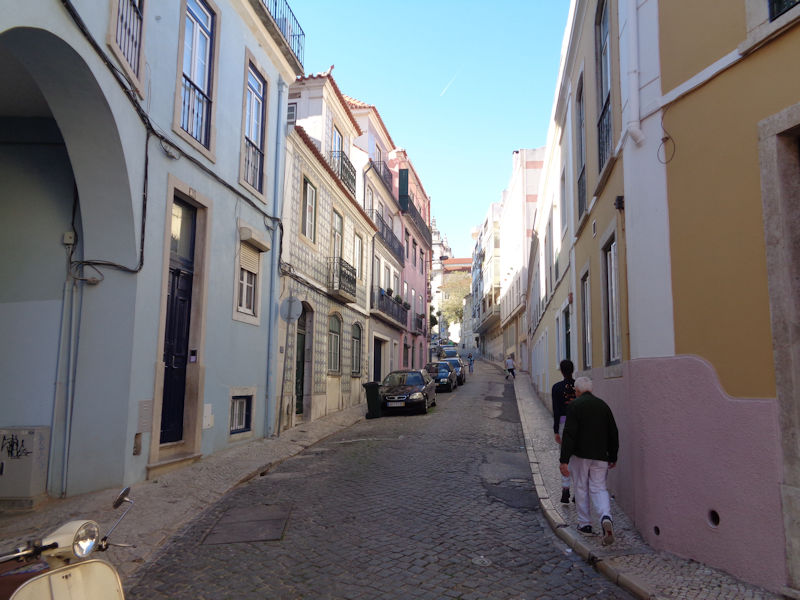
The Rua Dom Dinis (named for the 'Poet King', King of Portugal and the Algarves 1279 to 1325) -- a lovely little street; there are several streets in Lisbon named for King Dinis & near variants, so our taxi driver, who was relying solely on his GPS, made the rounds of the city before we found the right one. 26 October 2017.
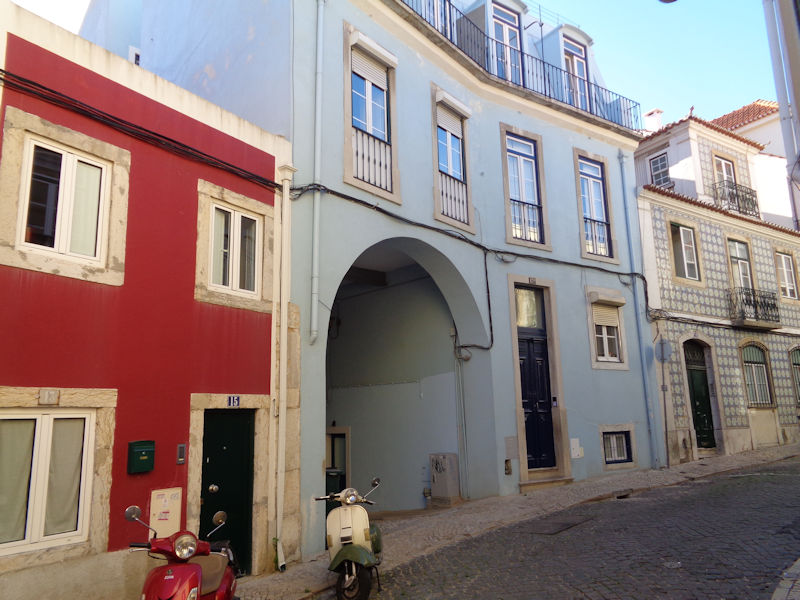
We're in through the archway -- with additional family members arriving early next week, we've sprung for an apartment through Airbnb, and it's worked out satisfactorily.
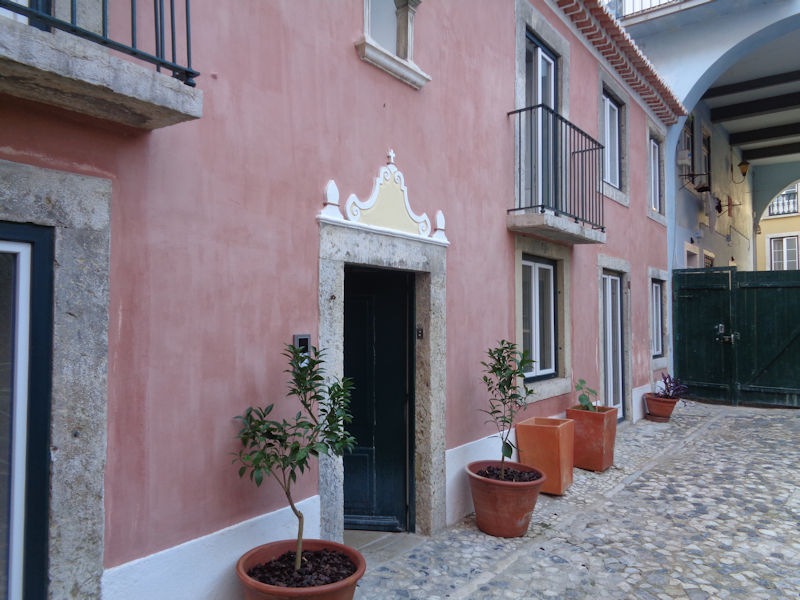
Our front door in the little courtyard inside our blue archway
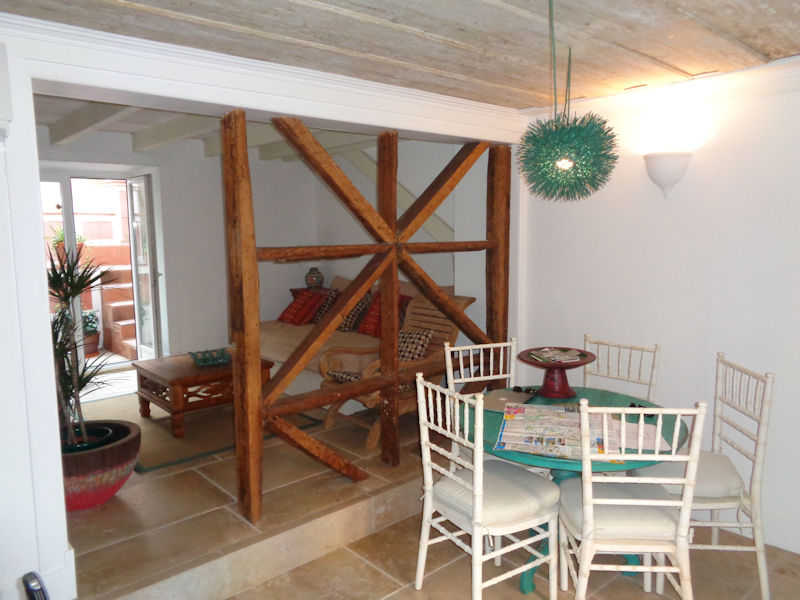
A few views of the little flat
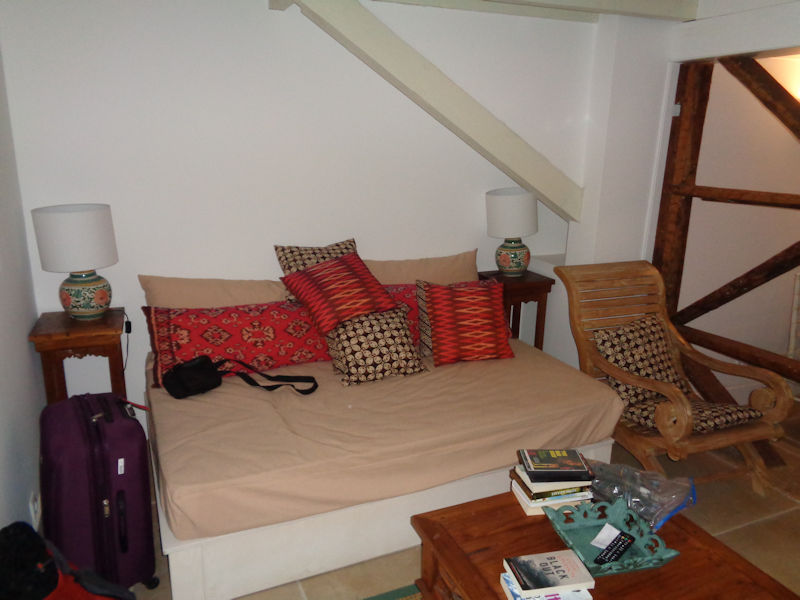
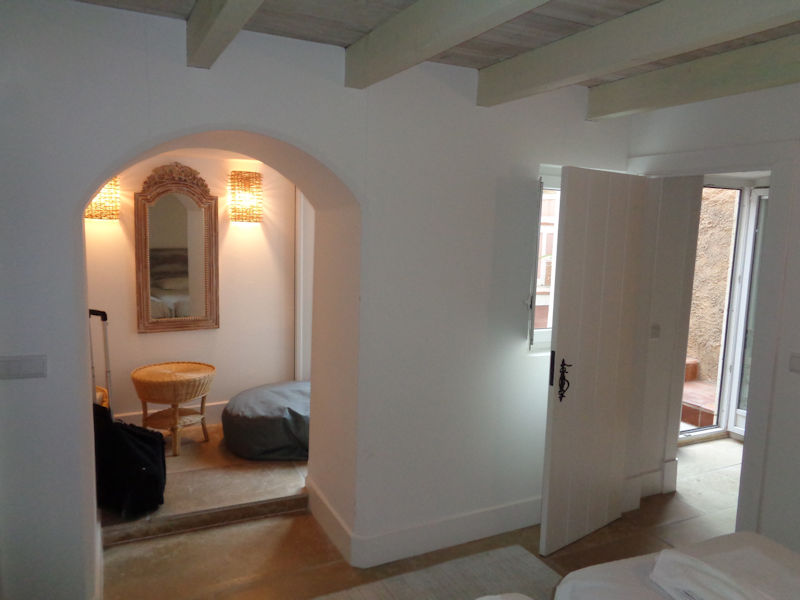
Two bedrooms with baths, sitting room/dining room, and a kitchen . . .
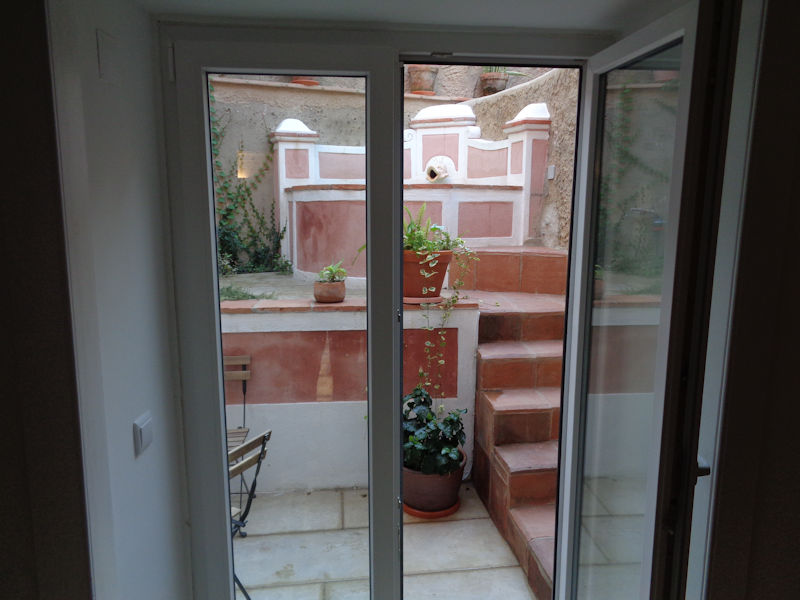
. . . and our own little fountain and back patio
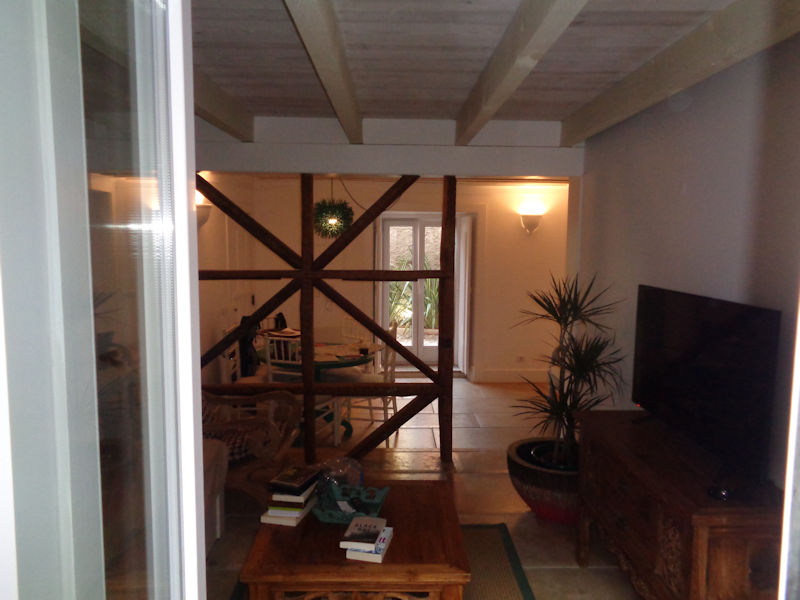
We dined locally, and the next morning set out on some preliminary explorations.
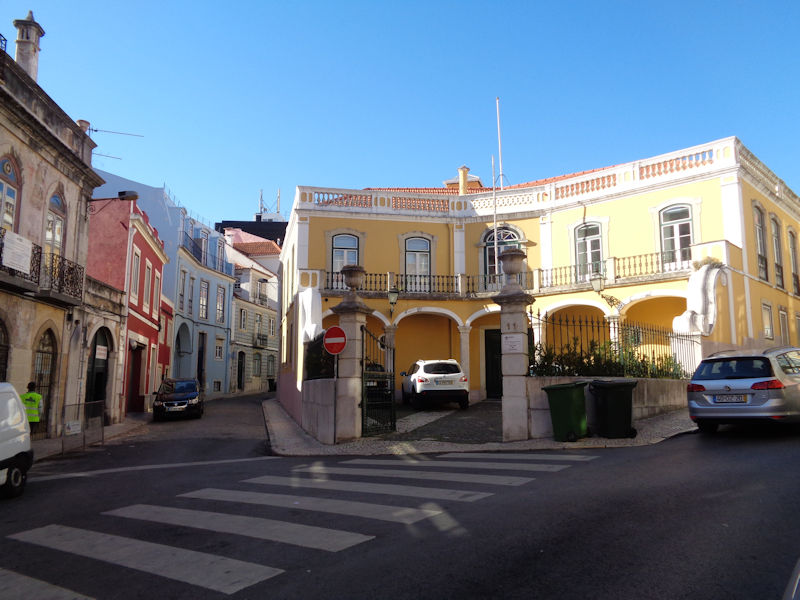
The Rua Dom Dinis joins the Rua do Sol ao Rato -- the lovely yellow building is enigmatically called the School of Diabetes.
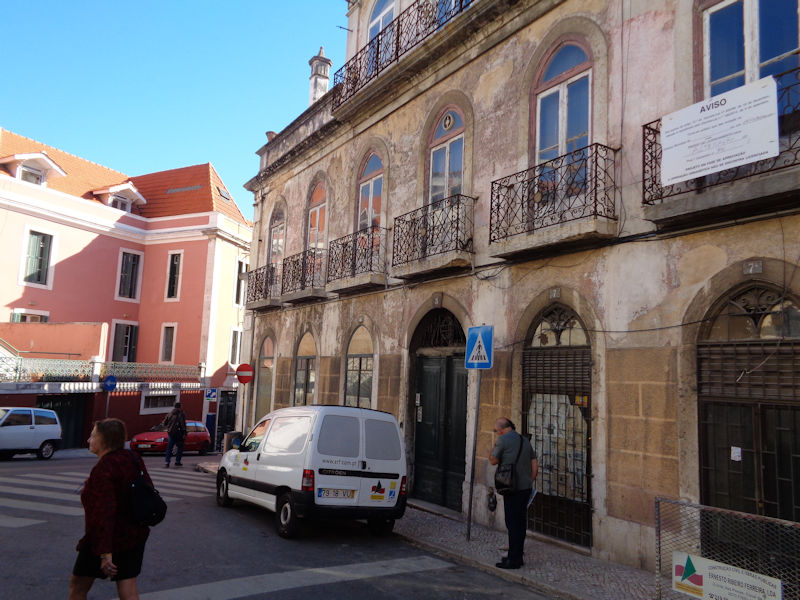
Our general location is convenient, in the peripheries of the downtown, rather high above the estuary of the river Tejo (generally known by its Spanish name, the Tagus), near the Rato piazza with its metro and bus communications.
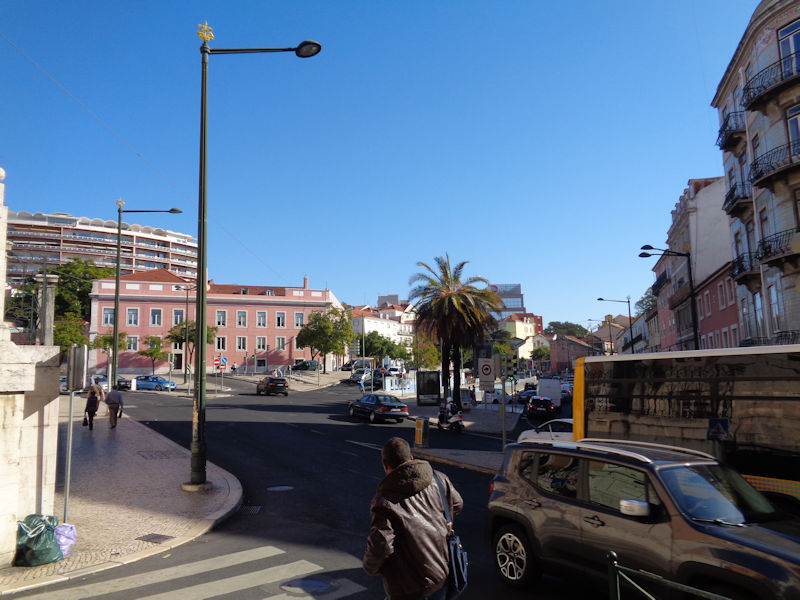
At the foot of the Rua do Sol ao Rato, this is the Largo do Rato (if we'd just told the GPS taxi driver that it was near the Largo do Rato, everything would have been fine; actually, we did tell him, but he was busy typing into his GPS device whilst careening through city traffic with one hand and occasionally two eyes).
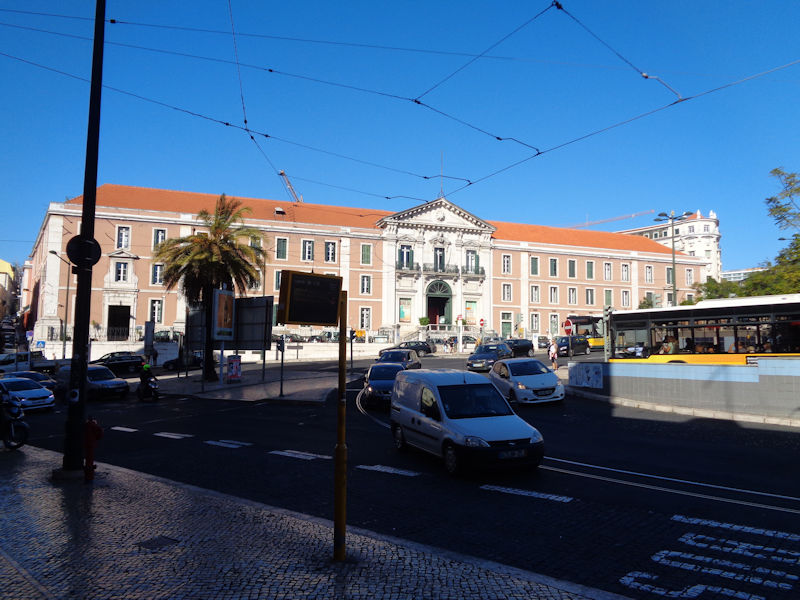
That huge thing is a Catholic church, with a police station tacked onto the end of it, and lots of school-age kids milling about.
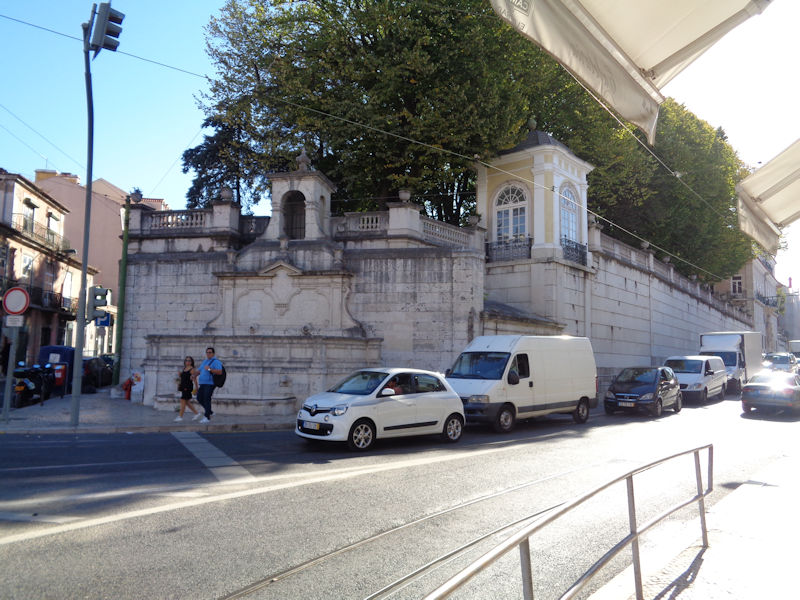
From the Largo do Rato, we're turning down the Rua da Escola Politécnica towards the river Tejo and all the best stuff for eager sightseers like us.
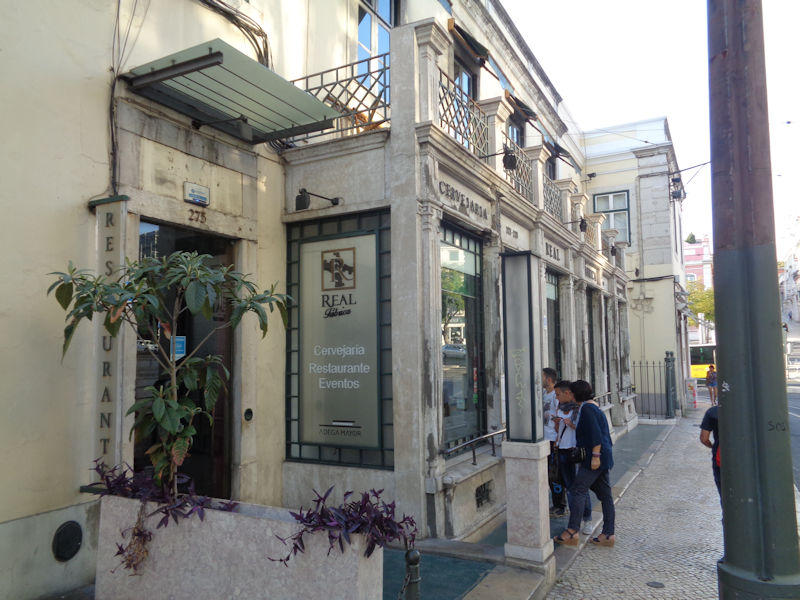
The restaurant Real Fabrica turned out to be our dinnertime home away from home for three nights (along with two nights at the nearby Ganesha Palace which specializes in Indian and Italian, where we went for the Indian [we asked about the odd combination of Indian and Italian specialties, and the waiter charmingly replied "Well, we have an Indian chef, and an Italian one"].
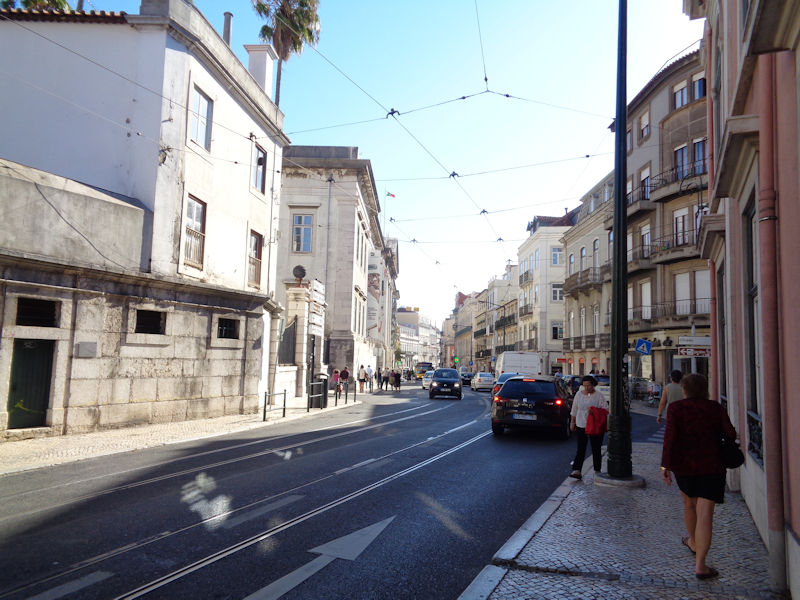
We're proceeding along the Rua da Escola Politécnica, which continues about one kilometre along a kind of spine or ridge in the direction of the river, with steep drops on either side -- on the left, down towards the central park/thoroughfare of Liberdade and on the right, down into the narrow old streets of the Bairro Alto.
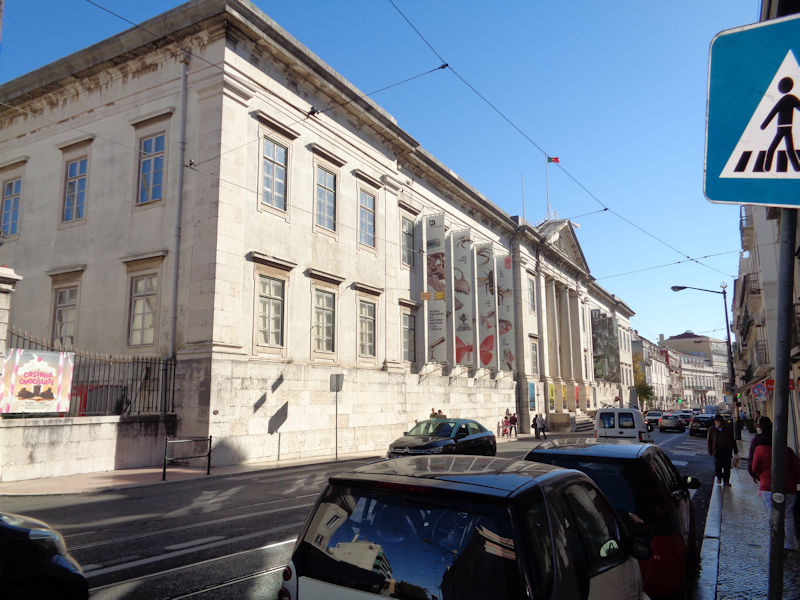
The Natural History Museum, with a huge botanical garden out the back of it.
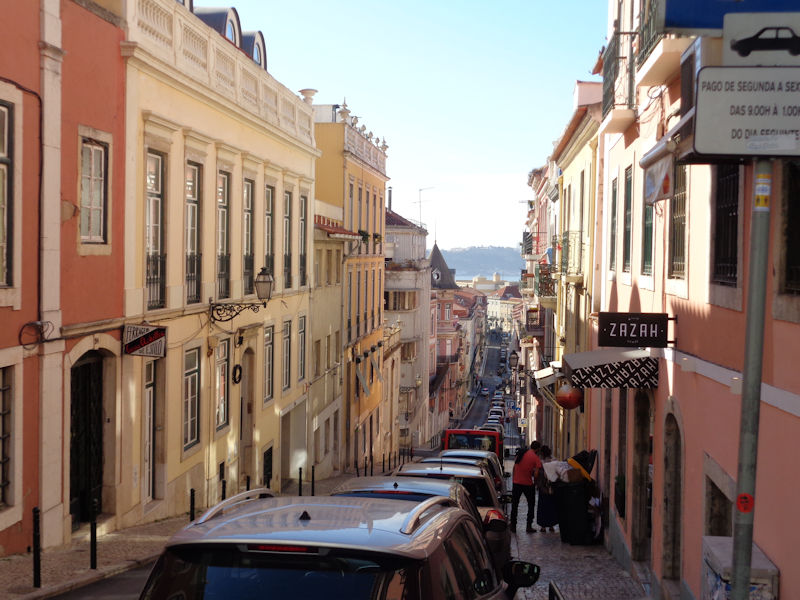
A glance down one of the side streets on the right (the Rua São Marçal). Those whitish sidewalk paving stones, throughout the central city, can nearly be lethal in dry weather (lethal in wet weather).

The huge Praça do Príncipe Real and its gardens ('jardim', as in French jardin)
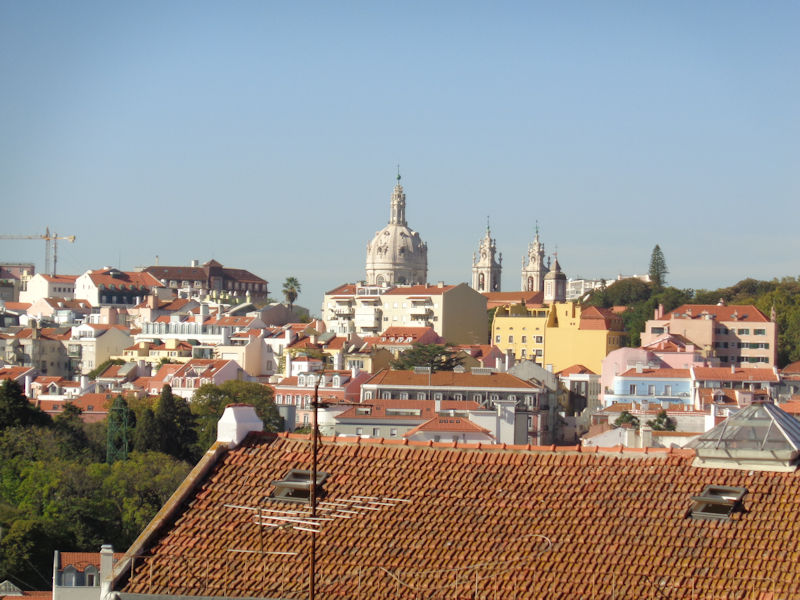
From the gardens of the Príncipe Real, we're looking across the way at the Basílica da Estrela.
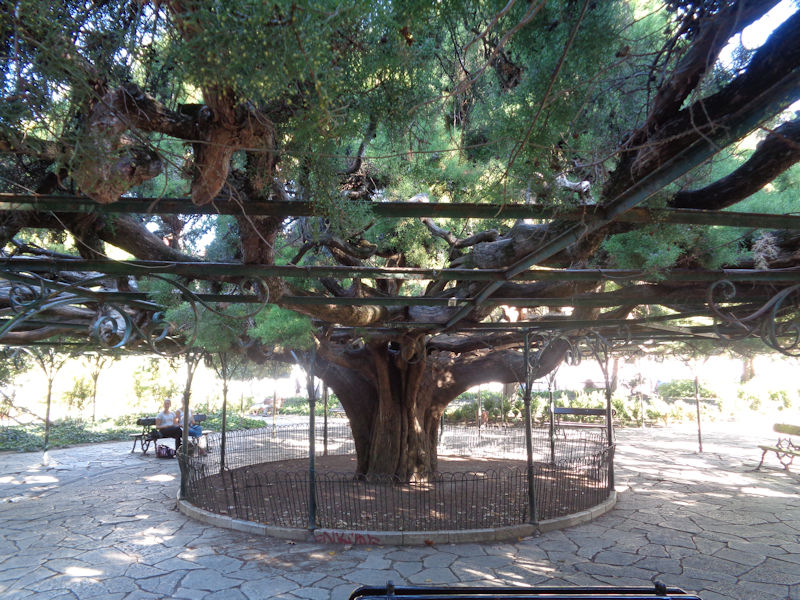
A venerable old tree on crutches (for some reason, it's called the Riesenwacholder, German for Giant Juniper)
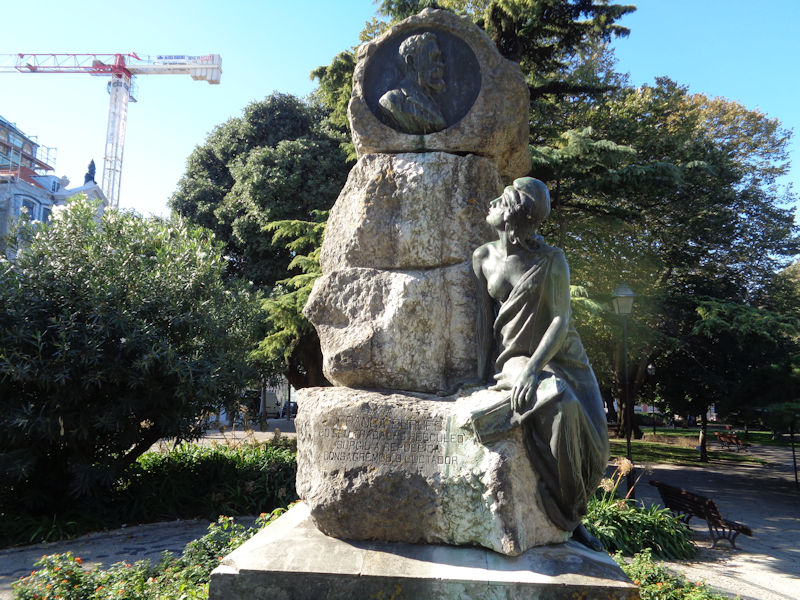
A monument to the republican journalist António da França Borges and one of his most devoted fans
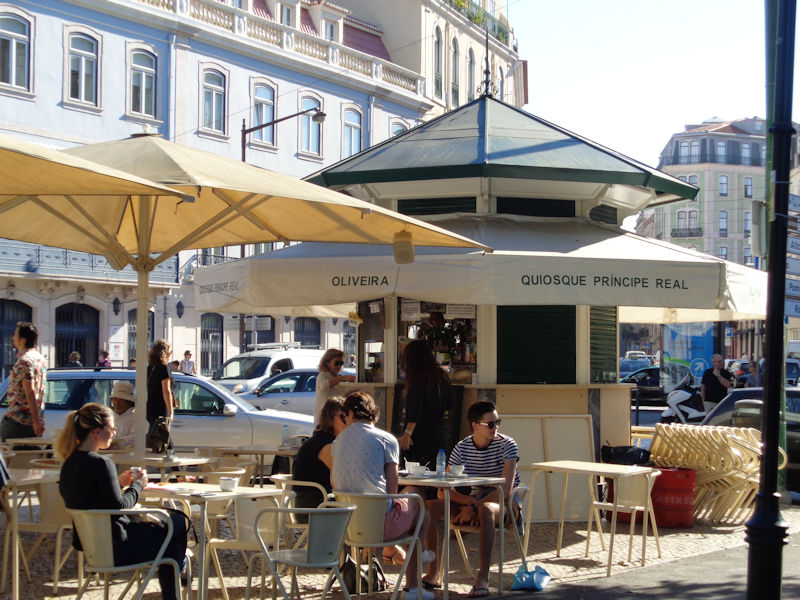
The 'Quiosque' (read 'kiosk') Príncipe Real
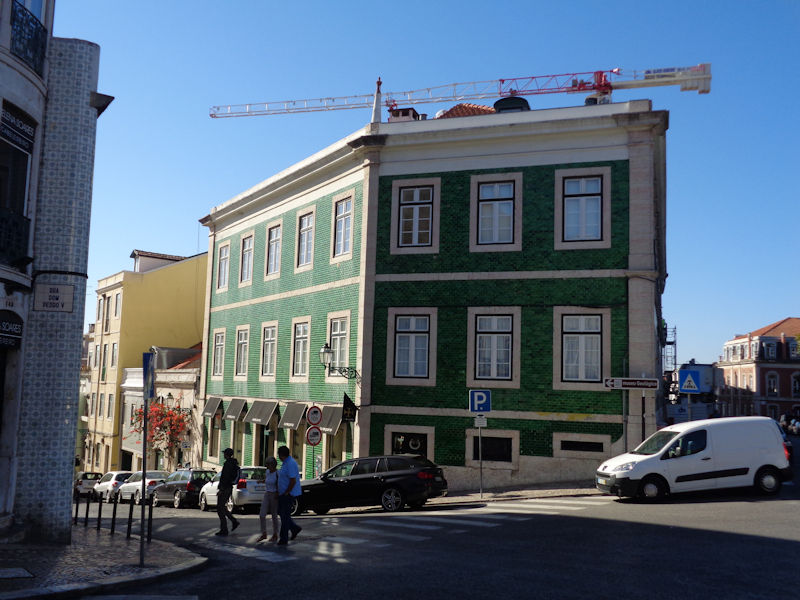
One of the things for which Lisbon is most admired is its ceramic tiled buildings -- here's one, but they're everywhere. Lisbon, presently with an immediate population somewhat over half a million, the largest city in Portugal, and said to be 11th most populous city in the EU (at 2.7 million counting its administrative area), is also known as the oldest city in western Europe. There were Neolithic inhabitants, followed by Celts in the late Bronze and Iron Ages, as well as by Phoenician/Carthaginian traders -- Roman influence in the Iberian Peninsula increased from 206 BC, during the 2nd Punic War against the Carthaginians, and Lisbon (as Olissipo), with its fine harbor in the Tagus estuary, prospered as a trading centre between the Atlantic and North Sea markets and the Mediterranean.
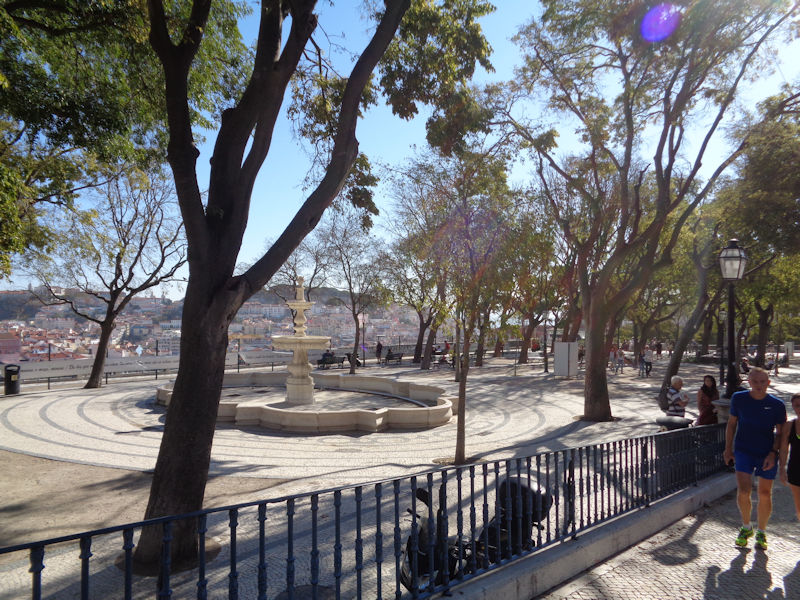
Our road descends to the little park of the Miradouro de São Pedro de Alcântara, with panoramic views. With the weakening of Roman control of western Europe and the movements of Germanic tribes in the early 5th century, Lisbon was occupied by the Alans and Vandals and then by the Visigoths, whose kingdom lasted until the arrival of the Muslim invaders, who captured the city in AD 711. Thereafter it was part of the Moorish Al-Andalus for four centuries except for a brief turn as an independent kingdom during the 11th century Taifa period and a 3-year occupation (1108-11) by Norwegian Crusader knights on their way to the Holy Land.
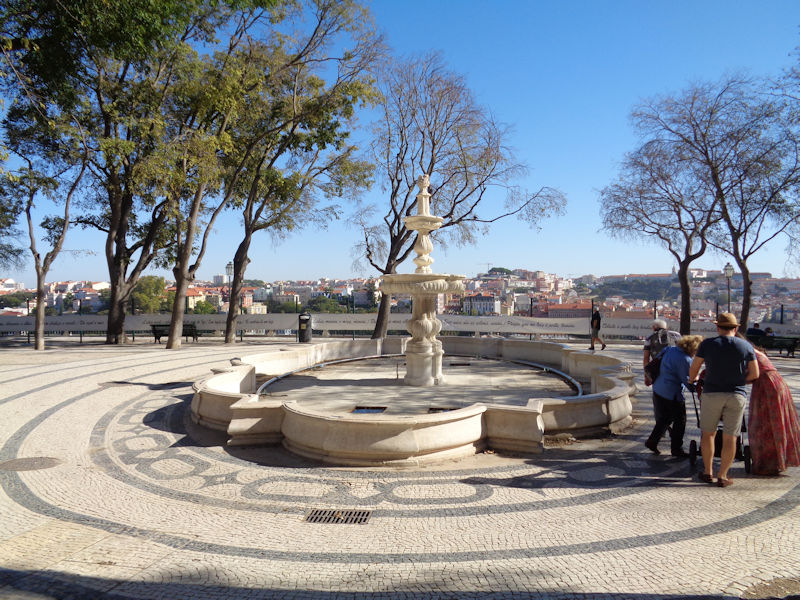
An attractive fountain taking a rest from its normal duties. Moorish Lisbon was besieged and taken in 1147 by Afonso Henriques, who was recognized by the pope as the first King of Portugal, and it remained the capital of the new Christian kingdom, and the home port of the great Portuguese marine explorers of the 16th and 17th century, until Napoleon's maurauders showed up in 1801 and 1807. Under the Spanish, who annexed Portugal from 1580 to 1640, it was still technically an independent kingdom in an odd sort of 'union'.
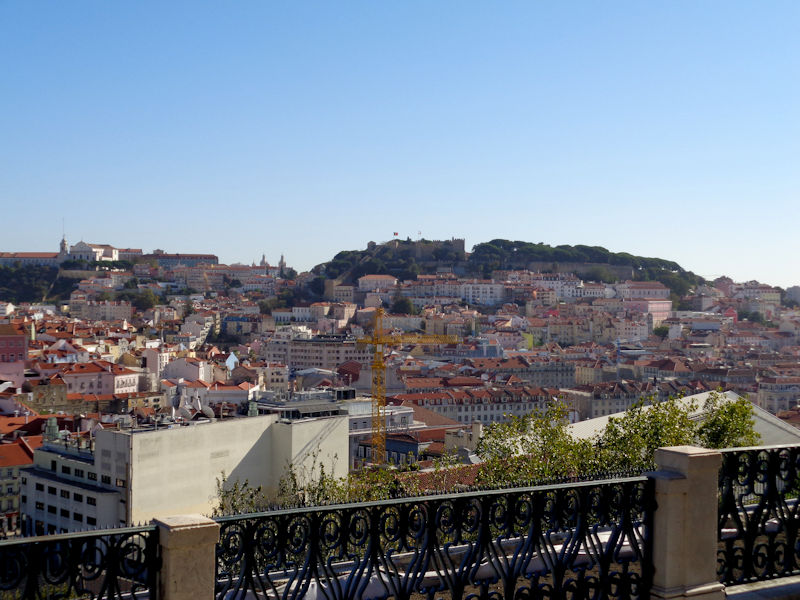
Across the vast declivity running up from the Tagus river to much higher ground, we see the St George Castle on the far side (and will visit it tomorrow). Perhaps the most significant event in Lisbon's history occurred on 1 November 1755, when an 8.5-9.0 earthquake caused much immediate damage but was followed by a tsunami and the fires that destroyed some 85% of the city's buildings; casualty estimates range from 40,000 to 100,000, and the event, in the age of 'benevolent deity' theologies and Leibniz's theodicy of 'optimism', had a profound effect on Enlightment Europe. As in Voltaire's satirical Candide (1759), where Dr Pangloss' confidence in 'this the best of all possible worlds' crashes up against the Lisbon Earthquake.
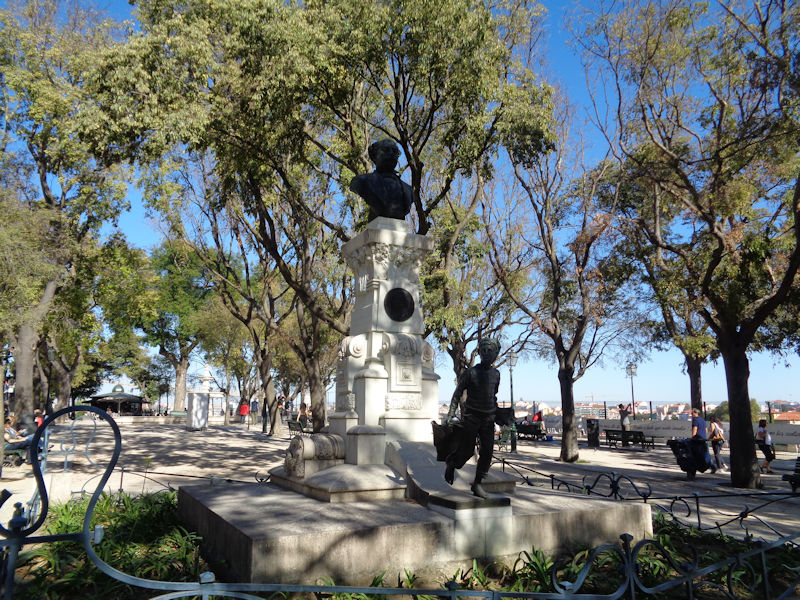
In the park of the Miradouro, this is the uninspiring monument to Eduardo Coelho, who founded the newspaper the Diário de Notícias in 1864.
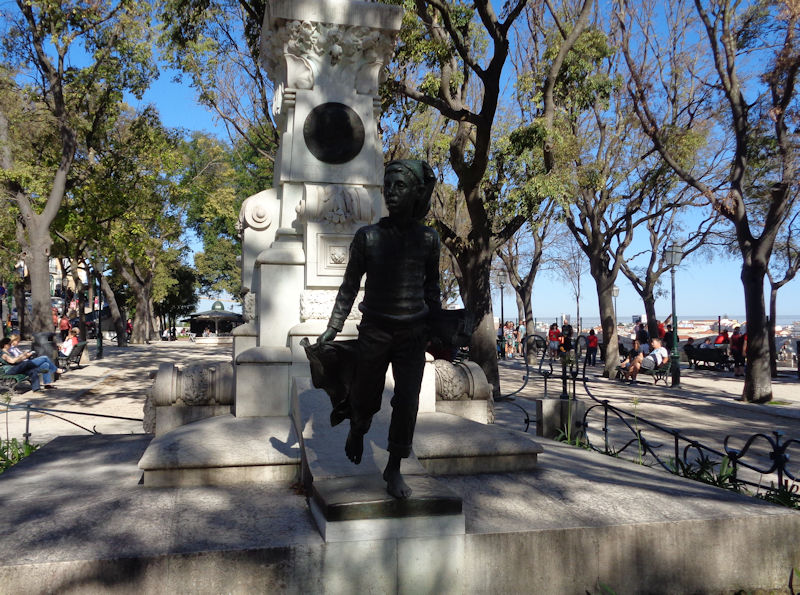
Much more interesting is the (possibly later) monument to his nameless newsboys.
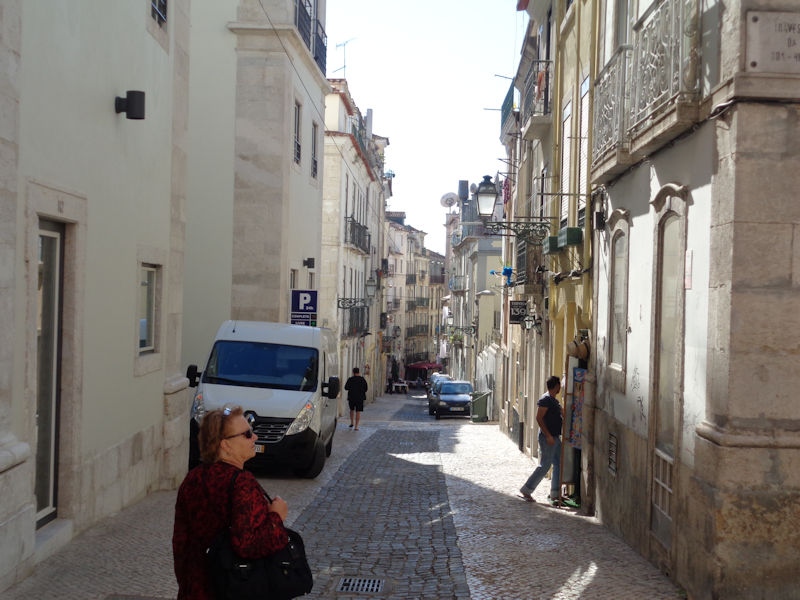
We're off the main road (too many cars), descending through the Bairro Alto ('upper neighborhoods') towards the river.
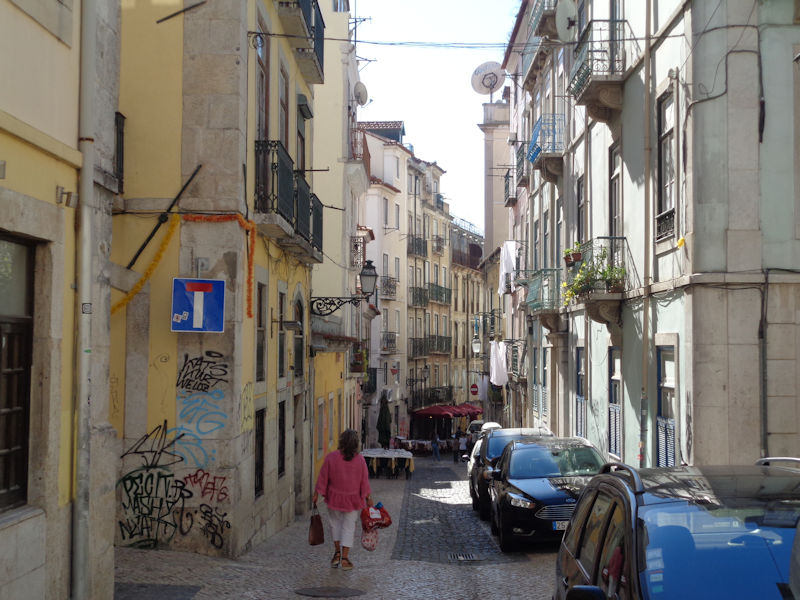
We're on the Rua do Diário de Notícias, in fact.
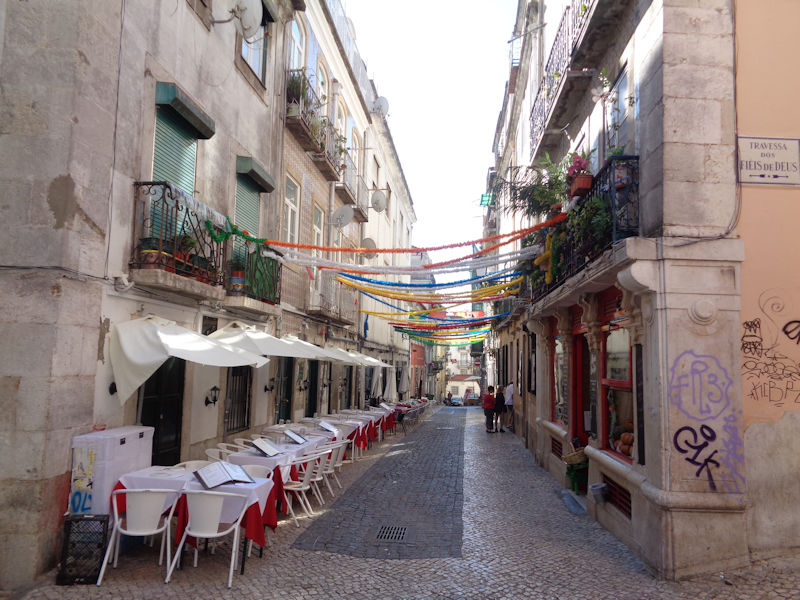
No narrow street without its lining of restaurants
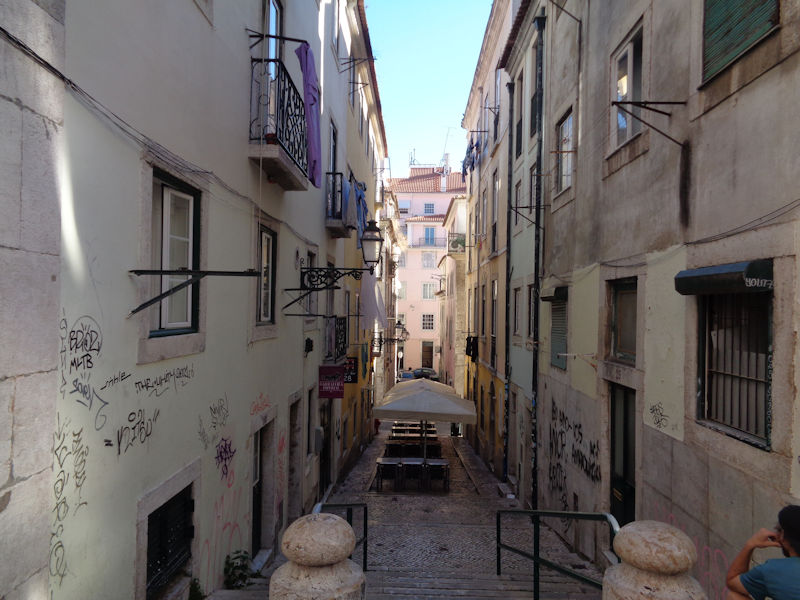
As on this side street off the side street
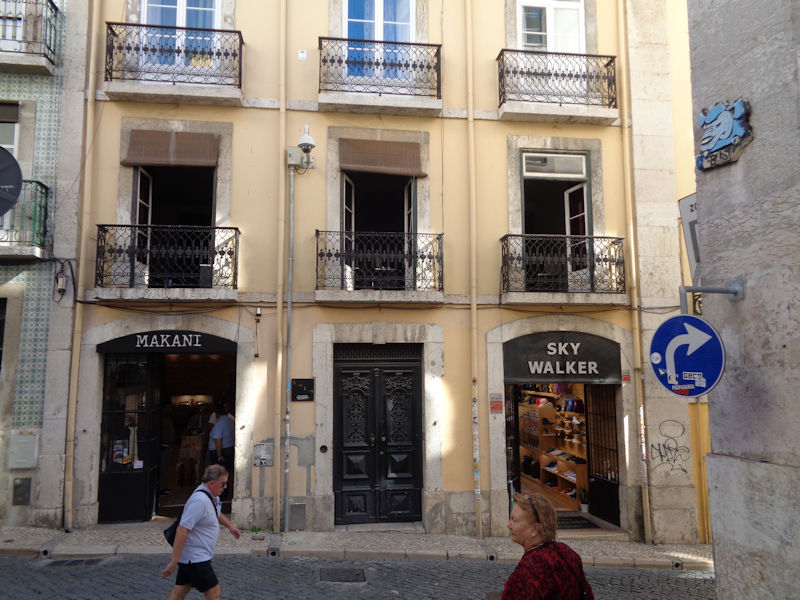
The Sky Walker shop, on the tiny Rua do Norte, entering the piazza of Portugal's legendary epic poet
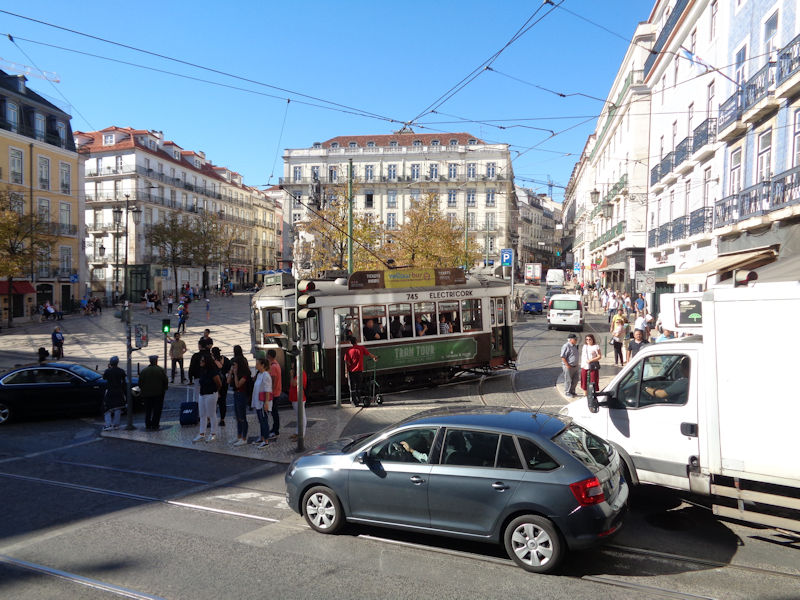
The Praça Luís de Camões, or Plaza Camoñes, a central gathering spot not far above the river for tourist trams (like this one), real trams, busses, cars of course, and tuk tuks.
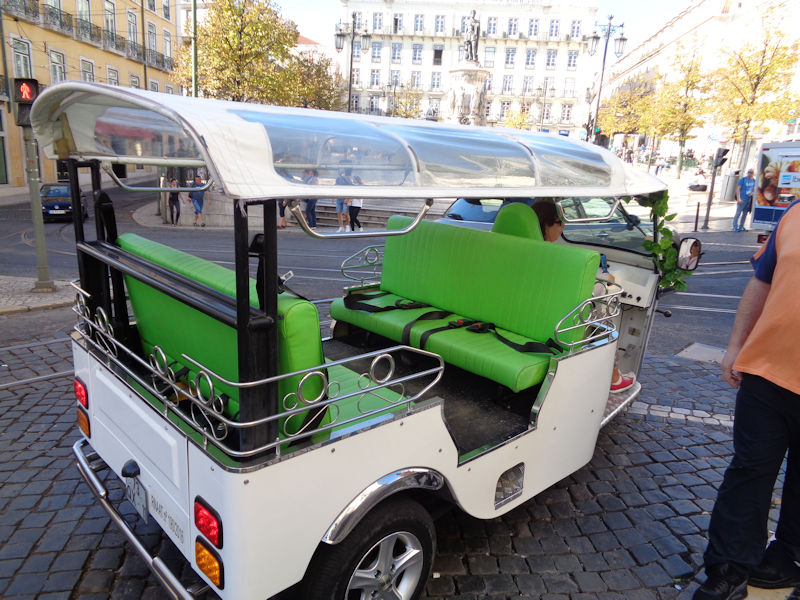
And here's a tuk tuk, a fairly chaste one -- most of them are adorned with advertising and nearly all are owned by companies with variations of Tuk-something ('Tuk-City', 'Tuk-Fun', etc.). They run round established routes, apparently with some kind of commentary, but when we asked one driver if he could just take us out to Bélem, a €6.50 taxi ride, the best price he could offer was €60 ('well, okay, €30 if it's just one-way').
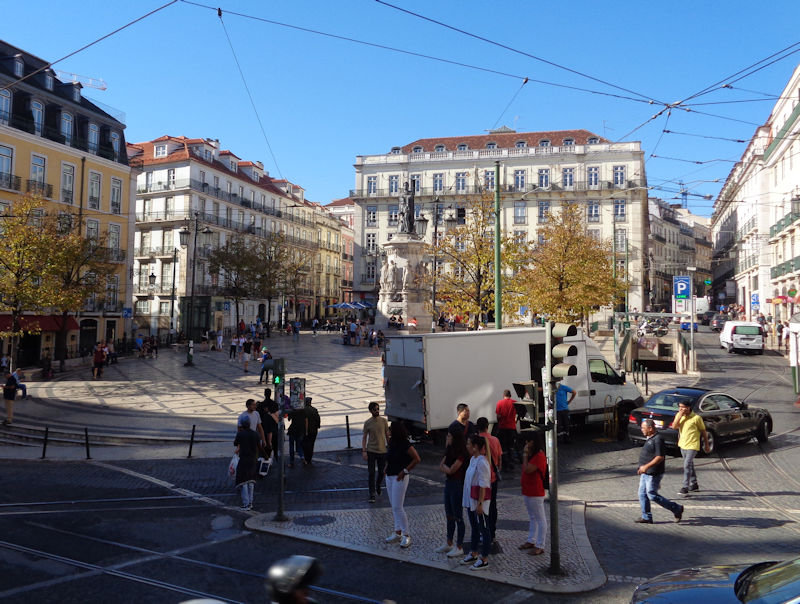
There's Luis on his pedestal.
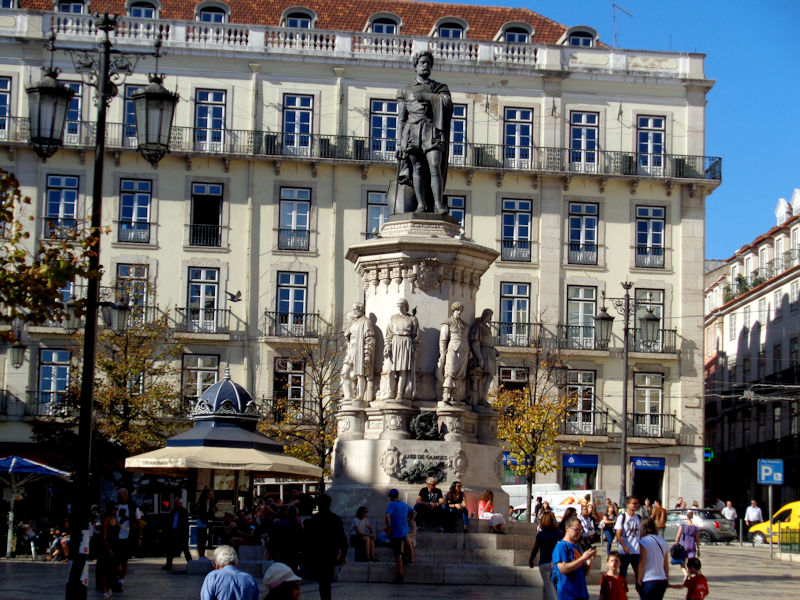
Luís de Camões (1524?-1580) is considered to be Portugal's Shakespeare, Dante, or Cervantes -- a prolific poet (and like Cervantes, a soldier) whose epic poem The Lusiads allegorizing Portugal's great explorations helped to standardize a national language for Portugal from its many regional dialects. (He is said, after a shipwreck off the coast of modern Cambodia, to have swum ashore holding up his manuscript over his head.)
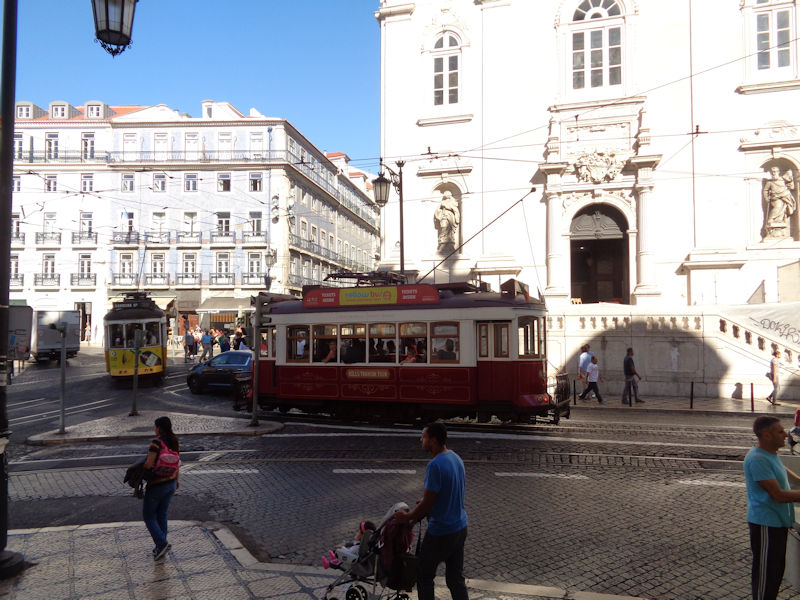
The tourist trams - most of the ones we saw had tourists standing in the central aisle, stooping down to see the sights out the windows. This is front of the Igreja do Loreto or Church of Loreto.
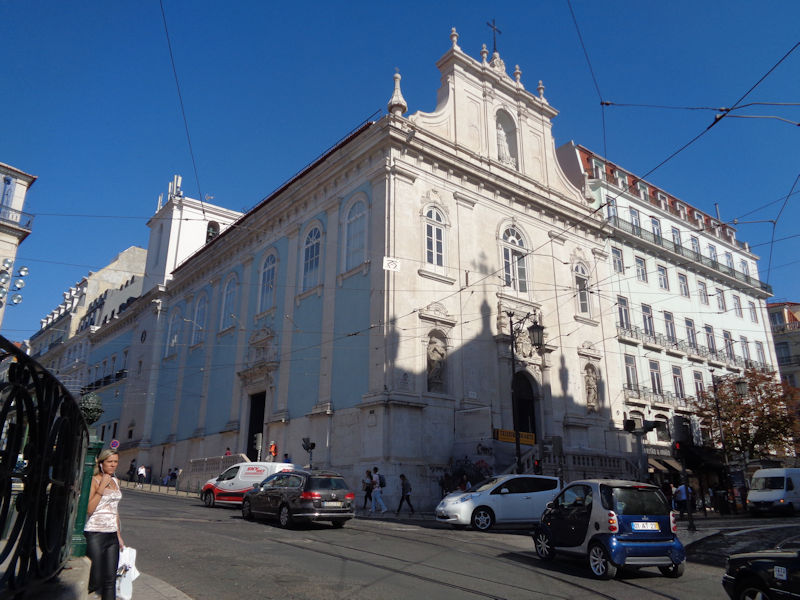
The Igreja do Loreto
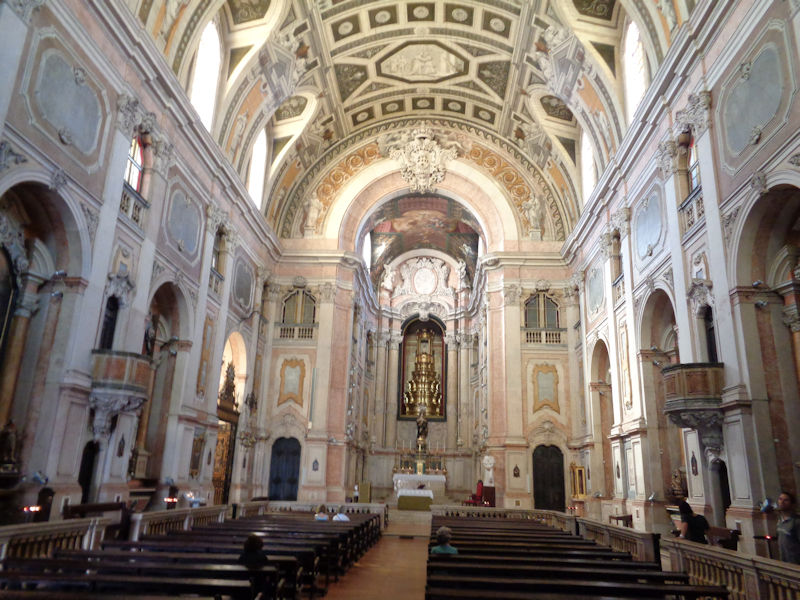
The Our Lady of Loreto church has a single nave with 12 side chapels covered in Italian marble -- a community of Italian traders and fishermen imported the 'cult' of the Virgin Mary's house transported to Loreto, near Ancona, Italy, in the 14th century, and the original church dated from that time, built into a tower of the then city walls.
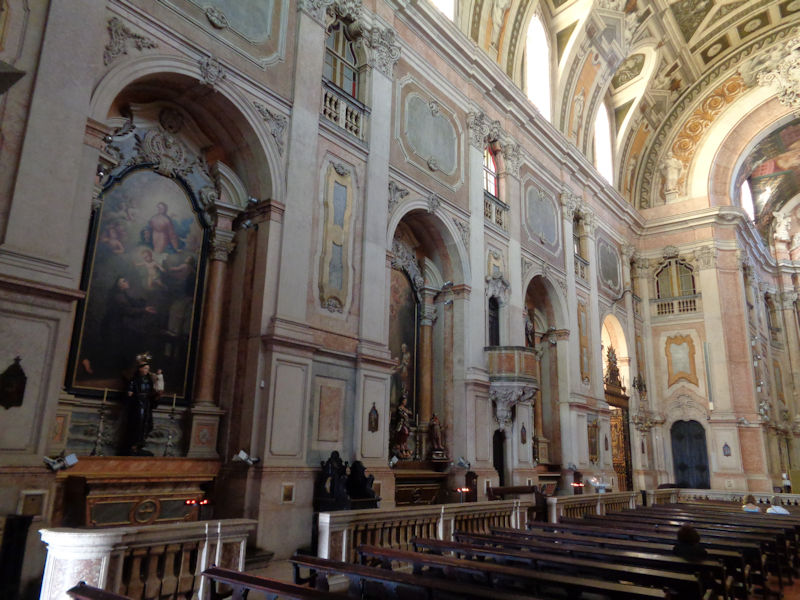
The current building generally dates from 1676 to replace the original destroyed in a fire in 1651; the earthquake of 1755 did enormous damage, which was repaired in a neoclassical style by 1785, but the side chapels seem all to have been spared.
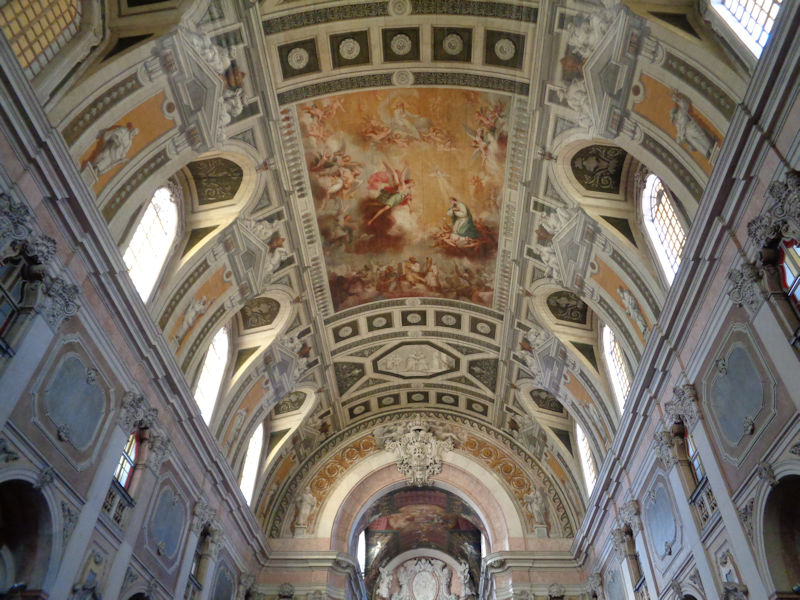
A late 18th century painting in the ceiling, attributed to someone named Alexandrino
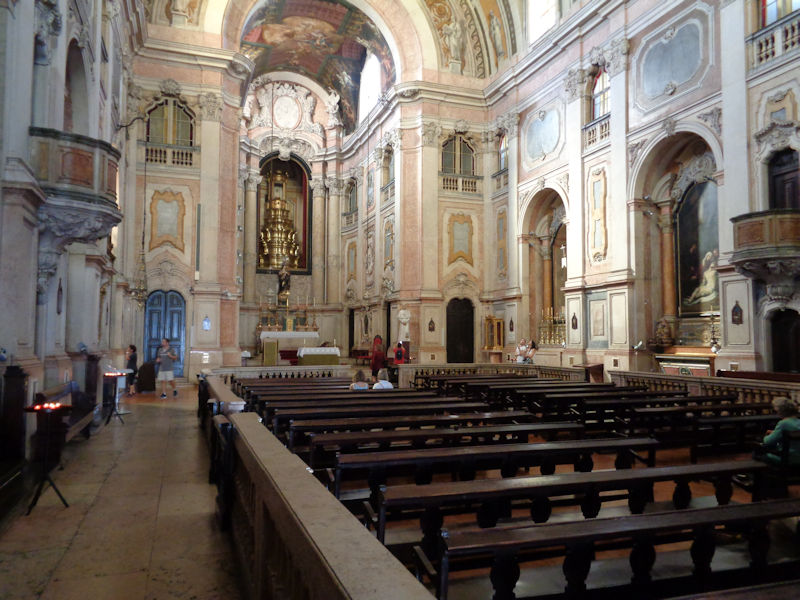
We saw this balustrade separating the chapels from the pews on both sides of the nave in several of the Lisbon churches.
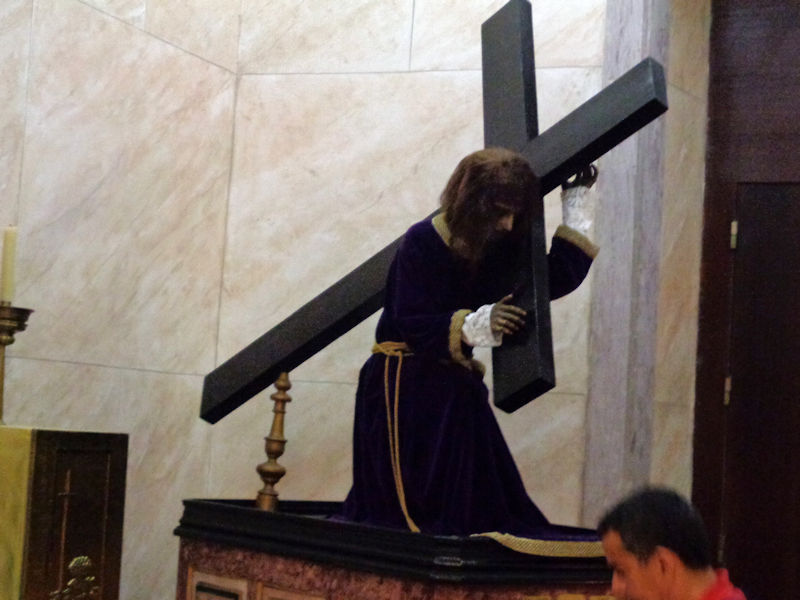
And similarly, most or all of them include this life-size Jesus doll laboring under his cross, placed prominently and attracting a devout following of their own.
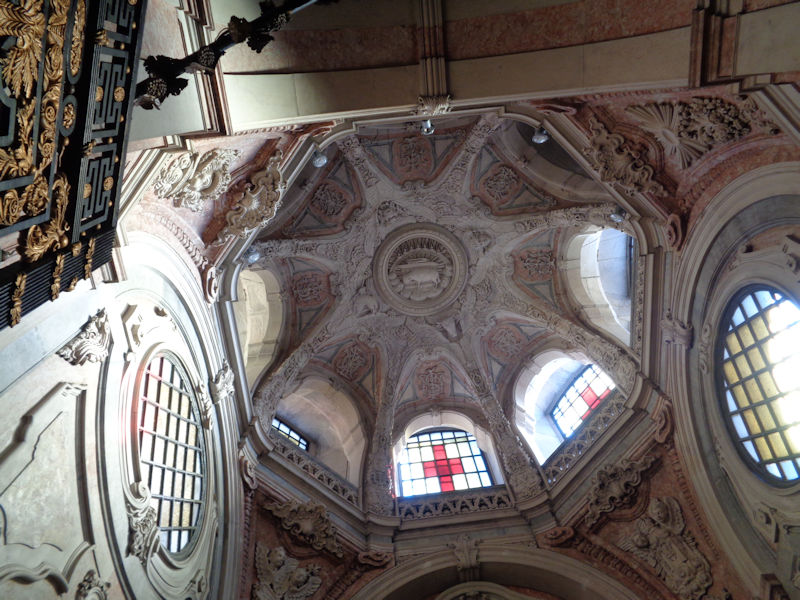
The dome of the Loreto church
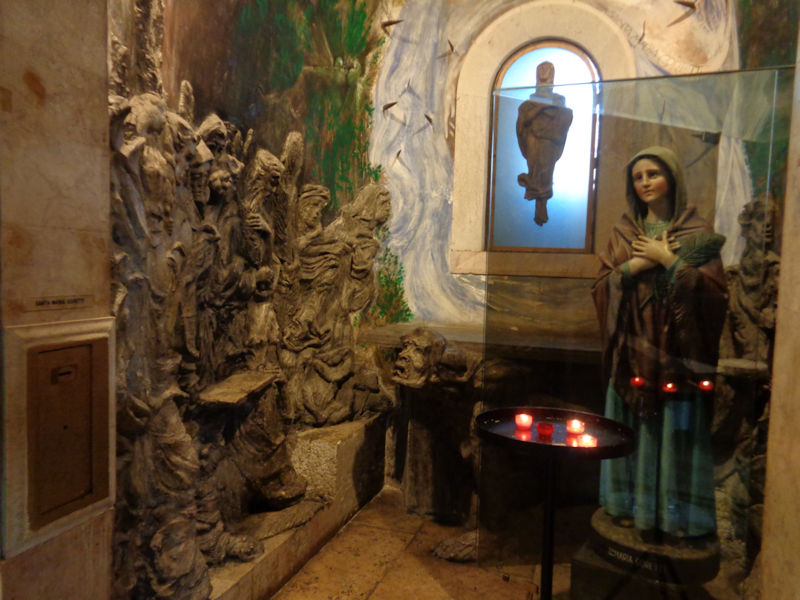
This odd chapel of the Lady of Loreto is in the form of a grotto with bestial or demonic figures.
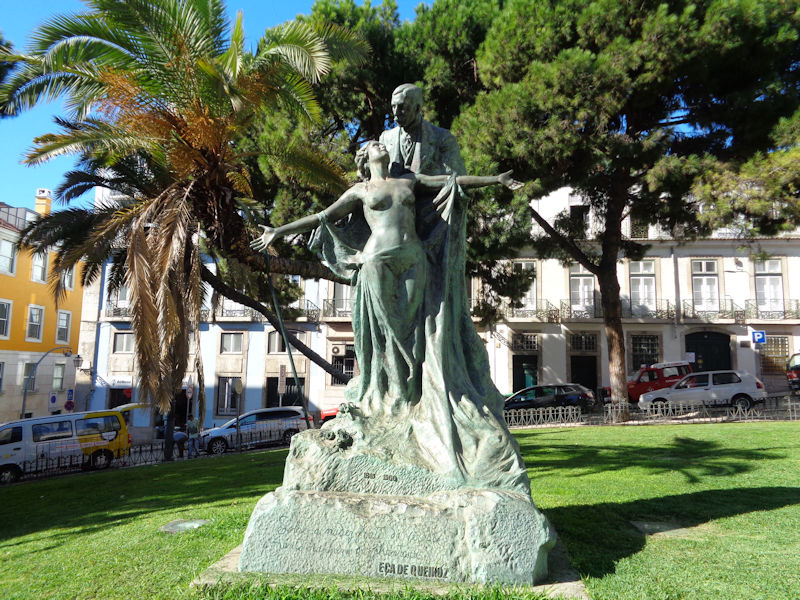
A statue of the 19th century writer and diplomat Eça de Queirós and one of his most devoted fans
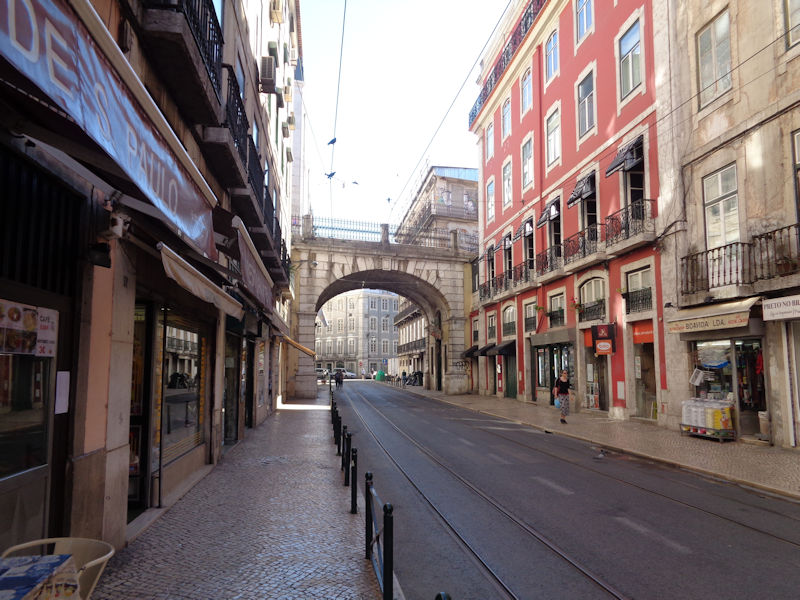
We're bottoming out now on the Rua de S. Paulo, three blocks from the riverside facilities and well within the central historic district, with all the good sightseeing stuff.
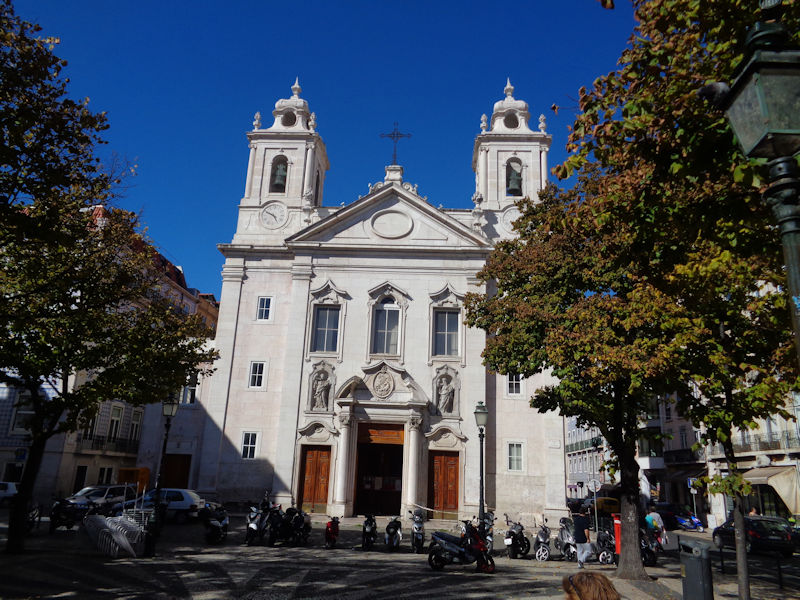
We're scuttling past the Igreja de São Paulo, but we're getting hungry. We'll just peek in briefly.
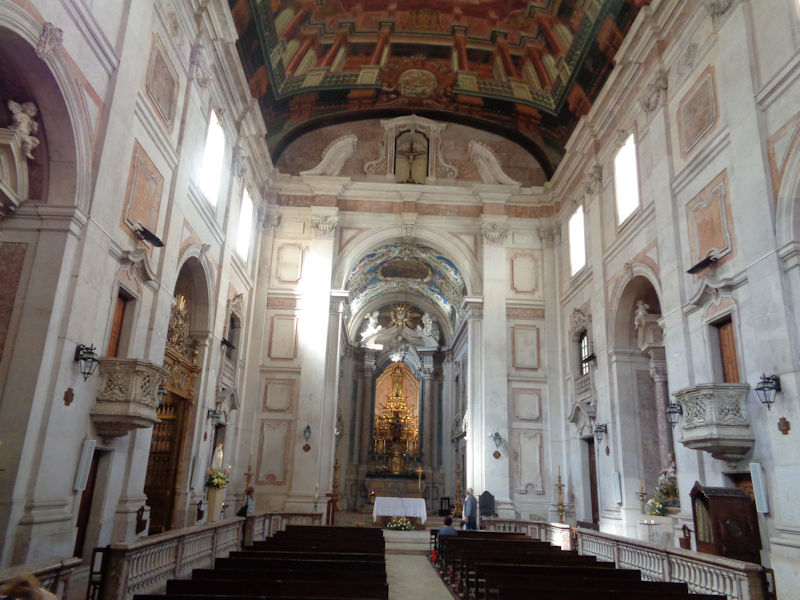
The predecessor church was destroyed in the 1755 earthquake, and this replacement began in 1768. It's got a single nave with eight side chapels, separated from the central nave by the balustrades on both sides. It's not really to our taste, and now we're really getting hungry.
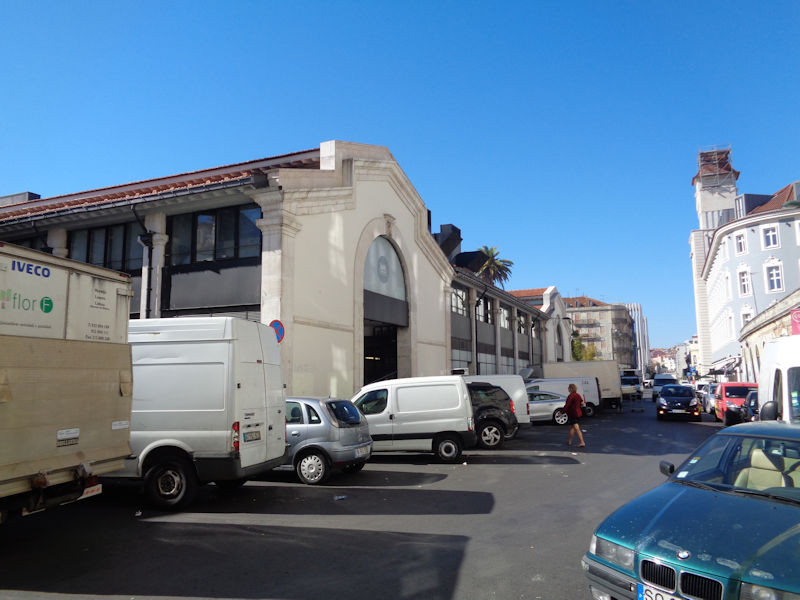
A covered market, the back of it actually; what's this about?
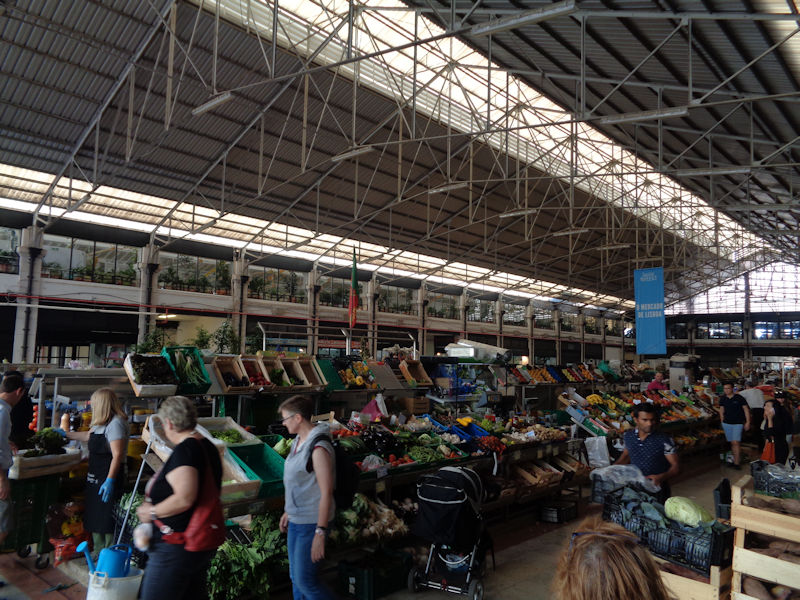
This is the Mercato de Ribeira ('riverside market). The city market was here as early as the 13th century, but the current enormous buildings date from 1892. A well-stocked farmers' market, what else can we find here?
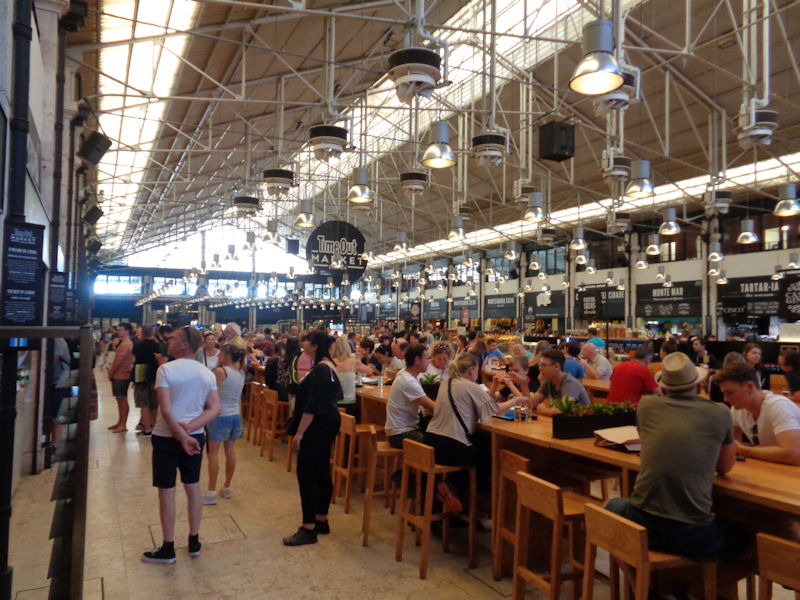
Lunch! Since renovations were completed in 2014, the Time Out Market has operated this huge culinary experiment, 34 independently operated food stalls featuring menus by famous Portuguese chefs and most of them specializing in specific styles and many of them featuring local products and recipes.
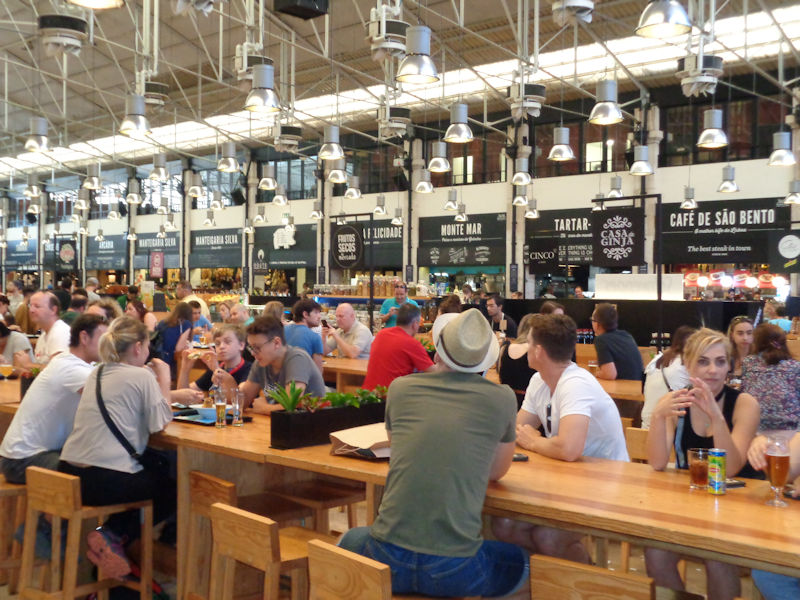
The food stalls use the same dishware and cutlery, and you grab your order when signalled by a beeper and sit wherever you can find a place -- which is not always easy. Clean-up staff who cycle around to bus the tables can carry the dishes, etc., all off indiscriminately.
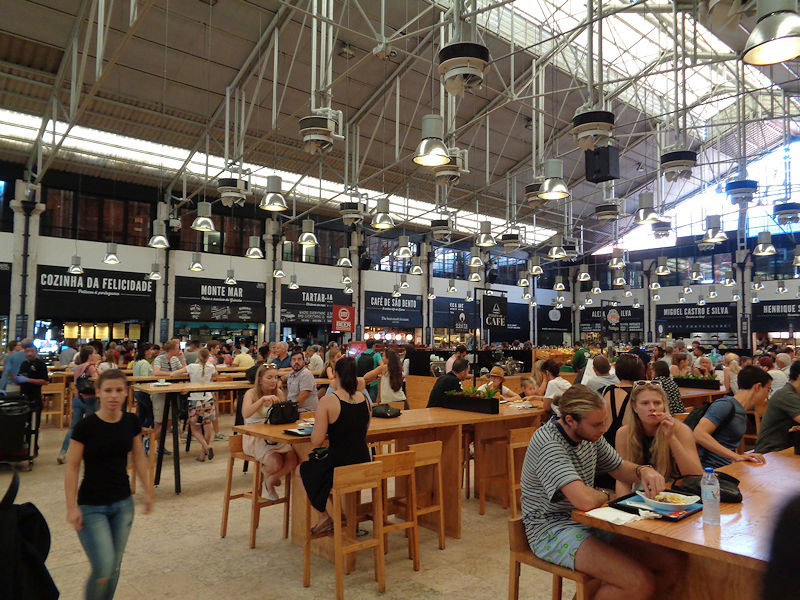
There are actually some places free today (a few days later we had a lot more difficulties) -- Time Out says that within eight months of opening, the Mercado de Ribeira has become the No. 2 tourist attraction in the city.
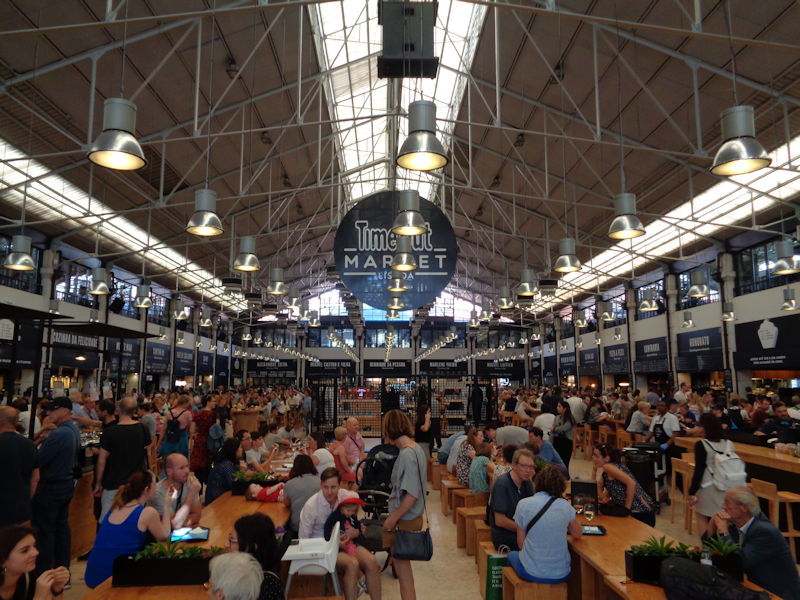
It's a brilliant idea, and as far as we experienced it, the food is very good-- it's worth one or more visits (as long as you can find a seat). The complex also hosts other functions, like concerts, cooking and art classes, etc.
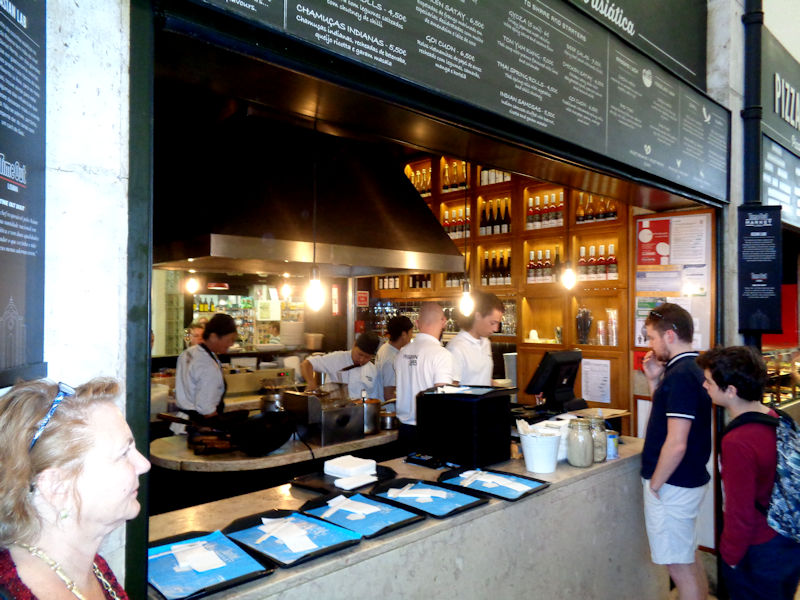
We went for the Thai. At the 'Asian Lab'.

Just next to the Mercado da Ribeira is the Jardim de Dom Luis I, King of Portugal and the Algarves 1861 to 1889 -- with one of his most devoted fans and her baby
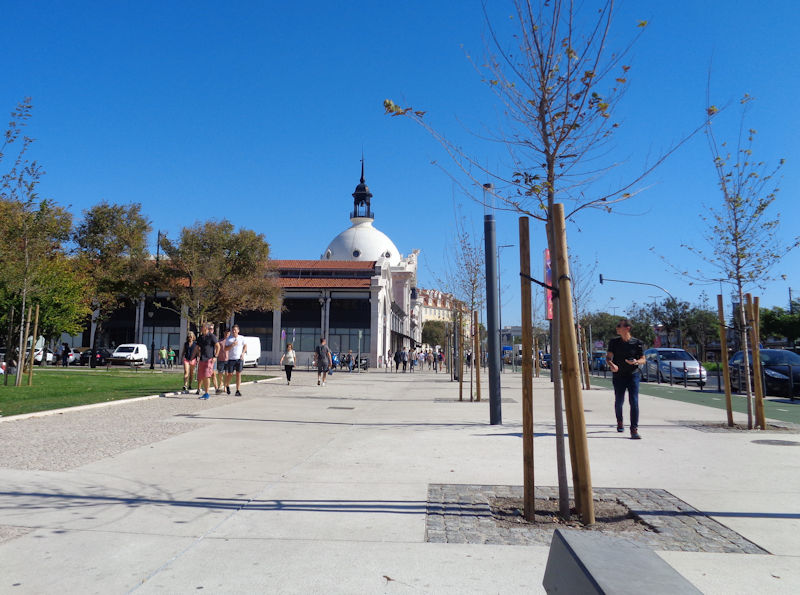
That's the front of the Mercado da Ribeira on the broad thoroughfare of the riverside Avenue of the 24th of July (the street name commemorates the liberals' conquest of Lisbon in the Portuguese Civil War, in 1833). We've decided to embark on the one kilometre walk westward to the next stop on our evolving itinerary, the Museu Nacional de Arte Antiga.
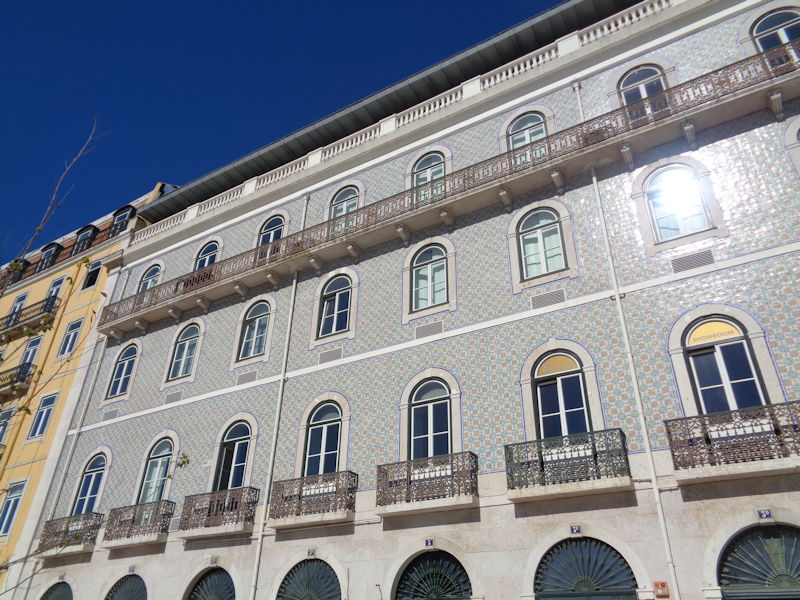
We'll see lots of tiled buildings, on our walk . . .
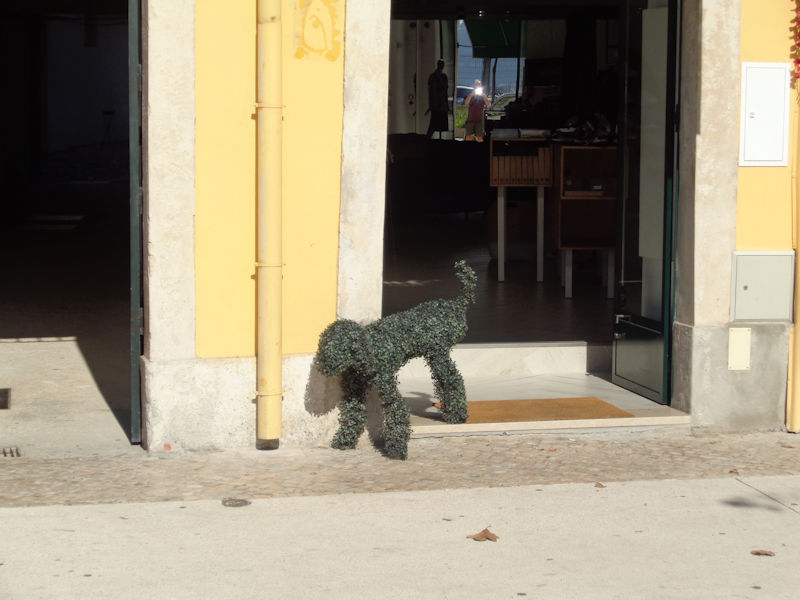
. . . and clever topiary . . .
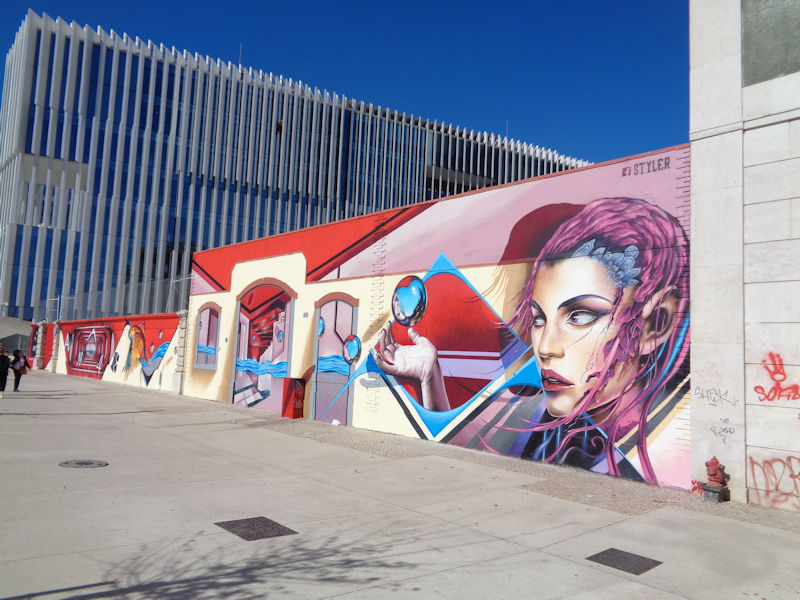
. . . and neat graffiti . . .
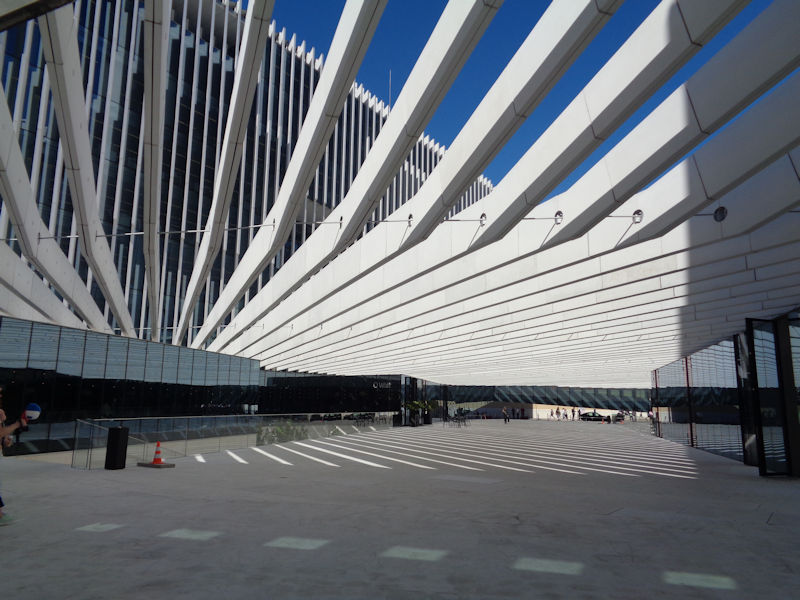
. . . and interesting new buildings . . .
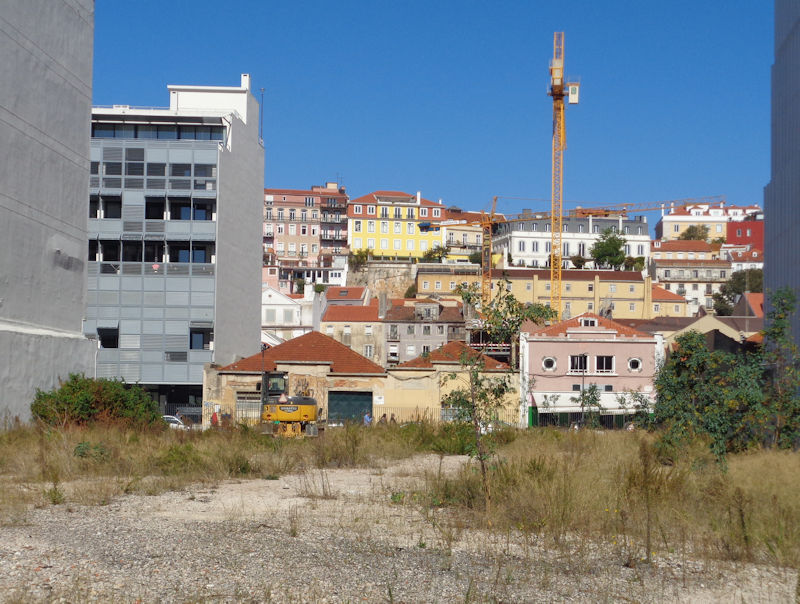
. . . and lots of opportunities for creative new development.

And intriguing works in progress
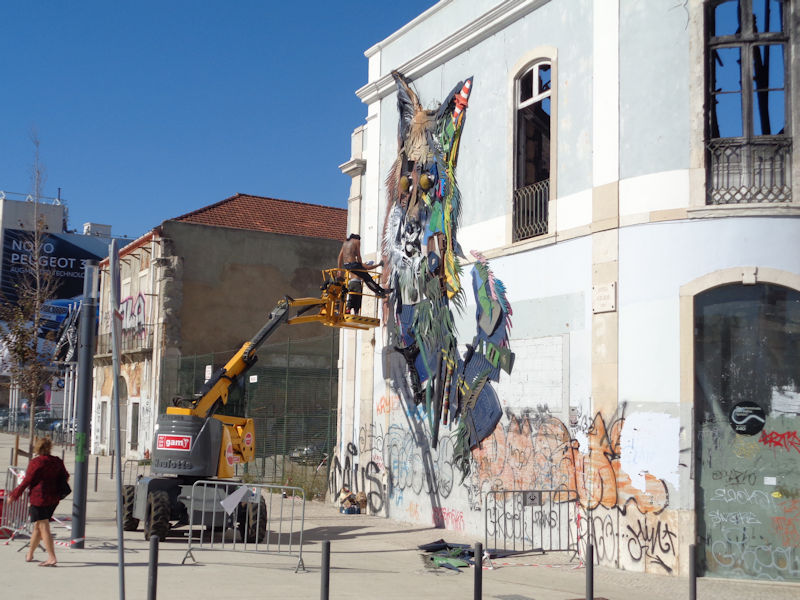
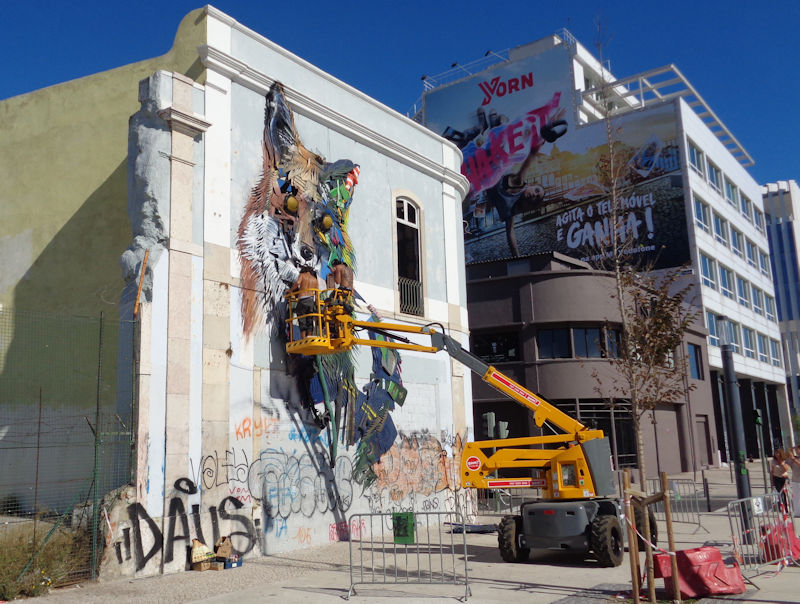
We saw the finished product three days later, and it was pretty amazing.

Nicely tiled buildings
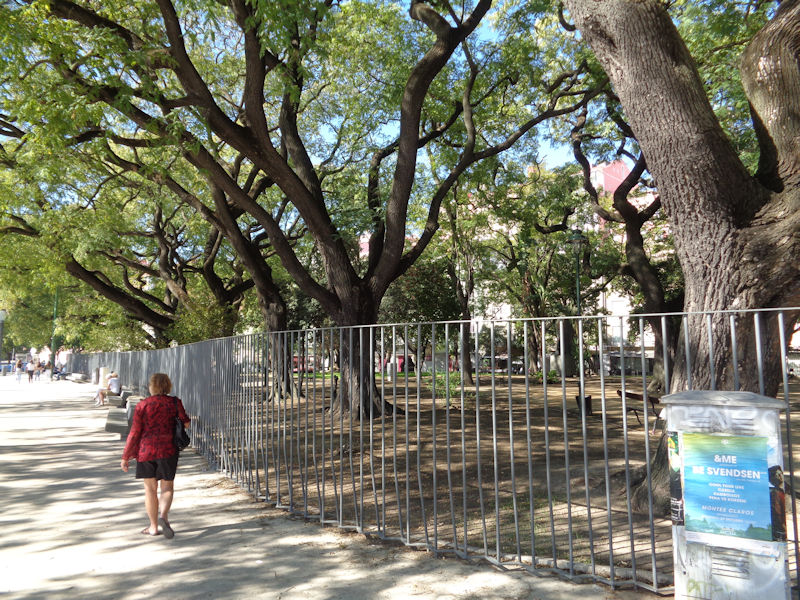
A little park: the Jardim de Santos
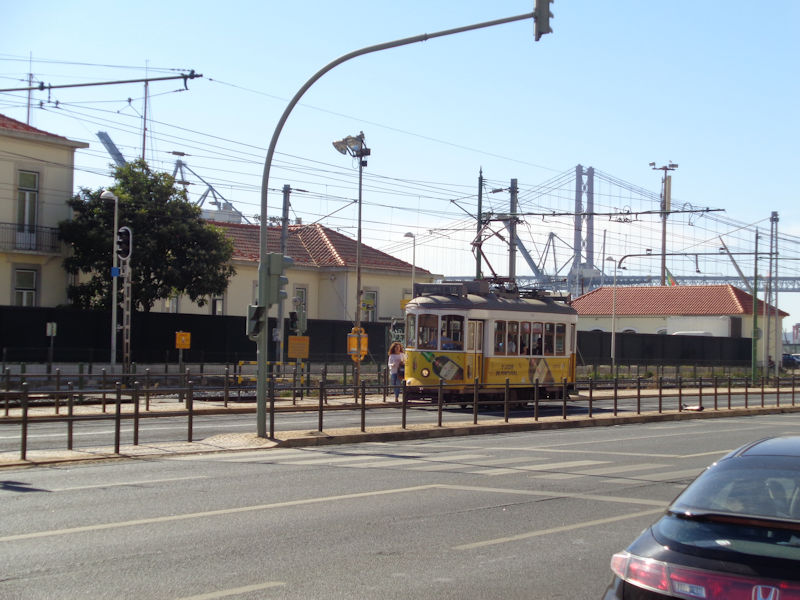
If I've read the map correctly, the museum is just on the far side of the thoroughfare; Kristin disagrees, but I'm convinced.
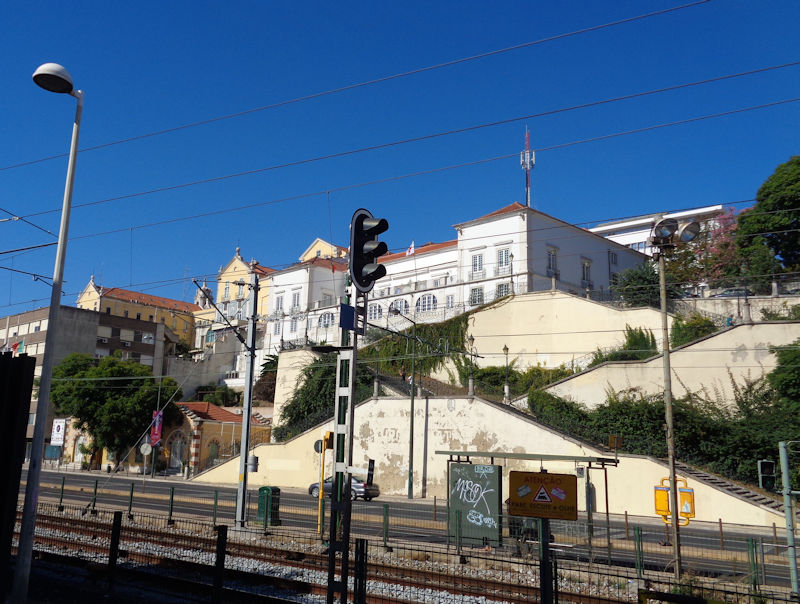
The Museu Nacional de Arte Antiga is actually, as it turns out, back on the other side, and up the hill a ways.
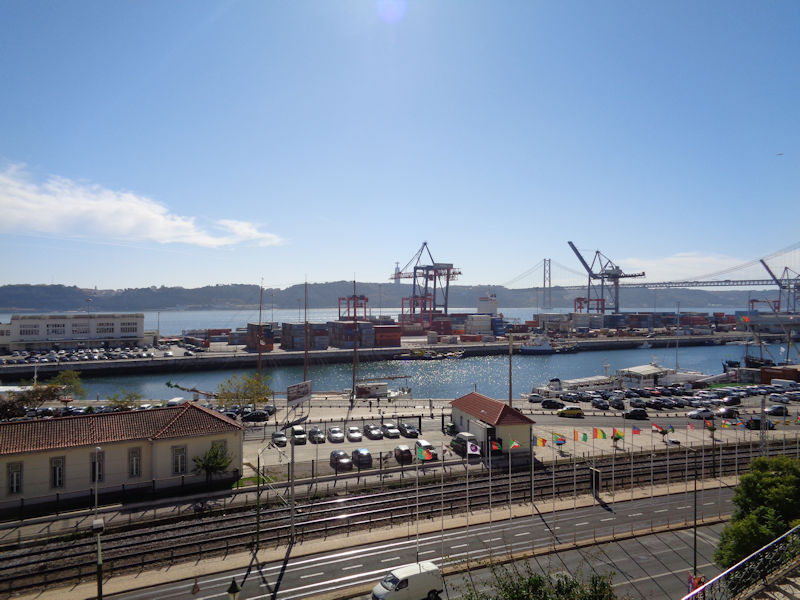
Views of the Lisbon port on the way up the stairs
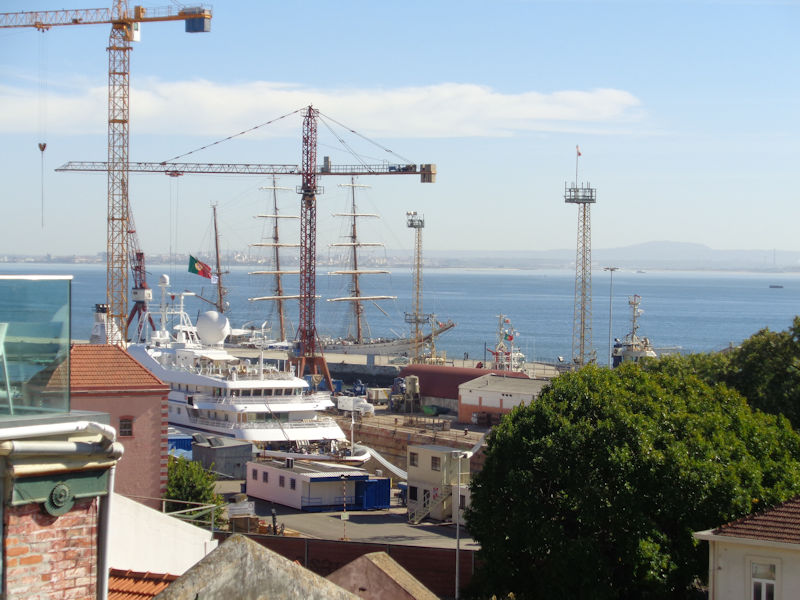
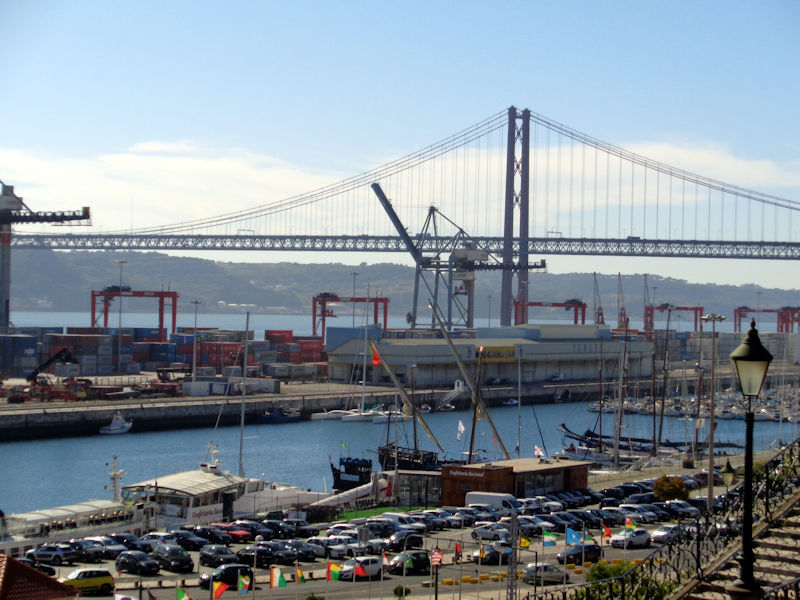
Including the Ponte 25 de Abril across the river Tagus -- opened in 1966, it's ranked as the 27th longest suspension bridge in the world and often compared to the Golden Gate Bridge; in fact, it was built by the American Bridge Company, which also built, not the Golden Gate, but the Oakland Bay Bridge. (It was named the Salazar Bridge, but changed to '25 de Abril' in honor of the Carnation Revolution that got rid of Salazar's Estado Novo dictatorship in 1974. {The protestors put carnations into the barrels of the army's rifles; it was a peaceful and much needed revolution.}
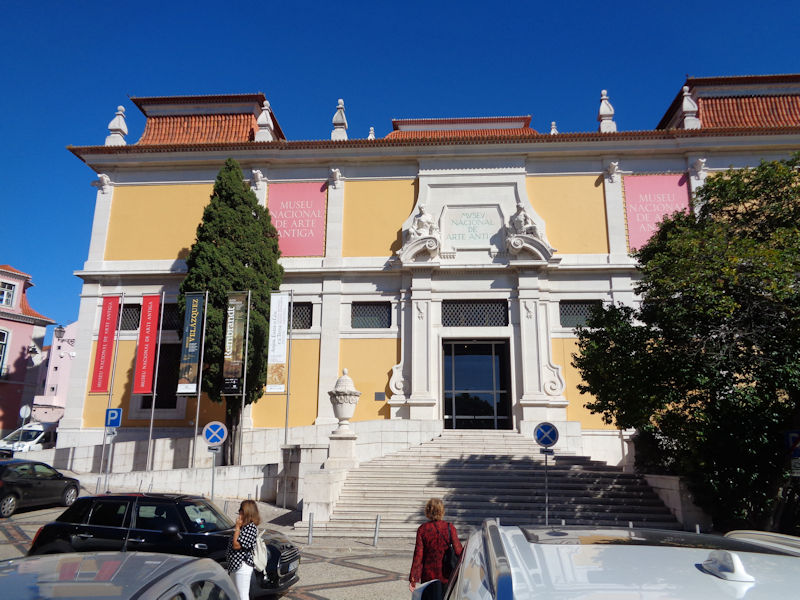
Here we are -- the Museu Nacional de Arte Antiga. It's time to change over to my other cheap Sony Cybershot which works much better within the 'No Flash' constraints of a modern museum.
The Museu Nacional de Arte Antiga, 27 and 31 October 2017








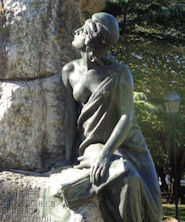 Dwight Peck's personal website
Dwight Peck's personal website









































































